

CHANGE SOME THINGS NEVER
The story behind an icon of the bitumen sector and how it’s changing for the better
EMPOWERING LIVES TOGETHER
Fulton Hogan has partnered with a foundation to change the lives of young Aboriginal and Torres Strait Islander men
BREAKING DOWN STEREOTYPES
An award-winning social enterprise is encouraging more females and non-binary people to succeed in the asphalt sector



UNEARTH THE POWER OF NEW
CRAWLER DOZER

NEVER IDLE
You don’t settle for second-best on the job site. So why settle for a second-hand import? Buying a new John Deere J Series-II Crawler Dozer could be as affordable as buying a used imported machine and will give you more of what you need and less of what you don’t. More dirt shifted, more powerfully. Less risk of costly repairs and downtime, backed by a rock-solid warranty and dealer support. Don’t let used equipment hold your operation back. Invest in new, today.
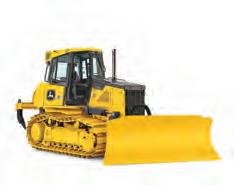
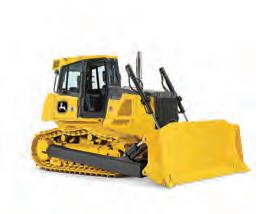
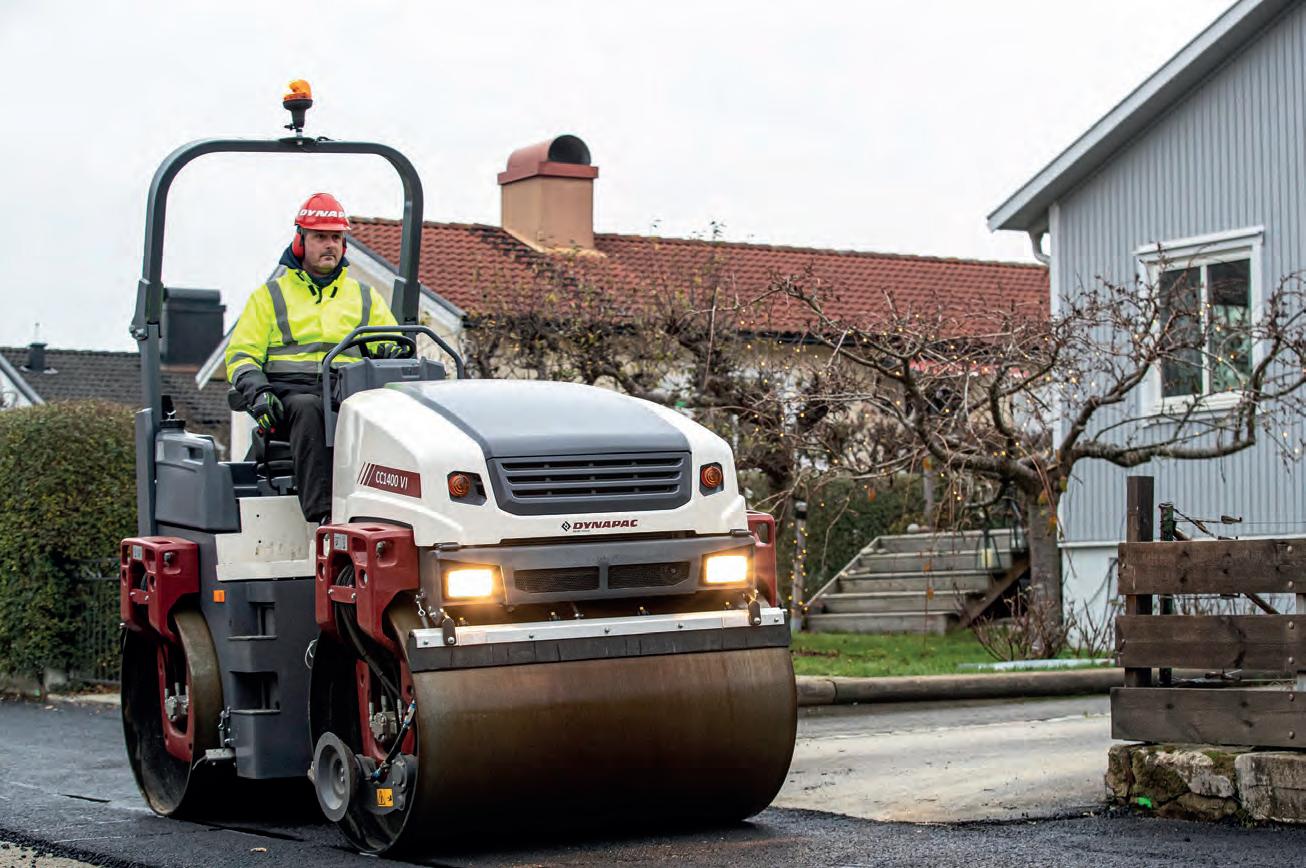
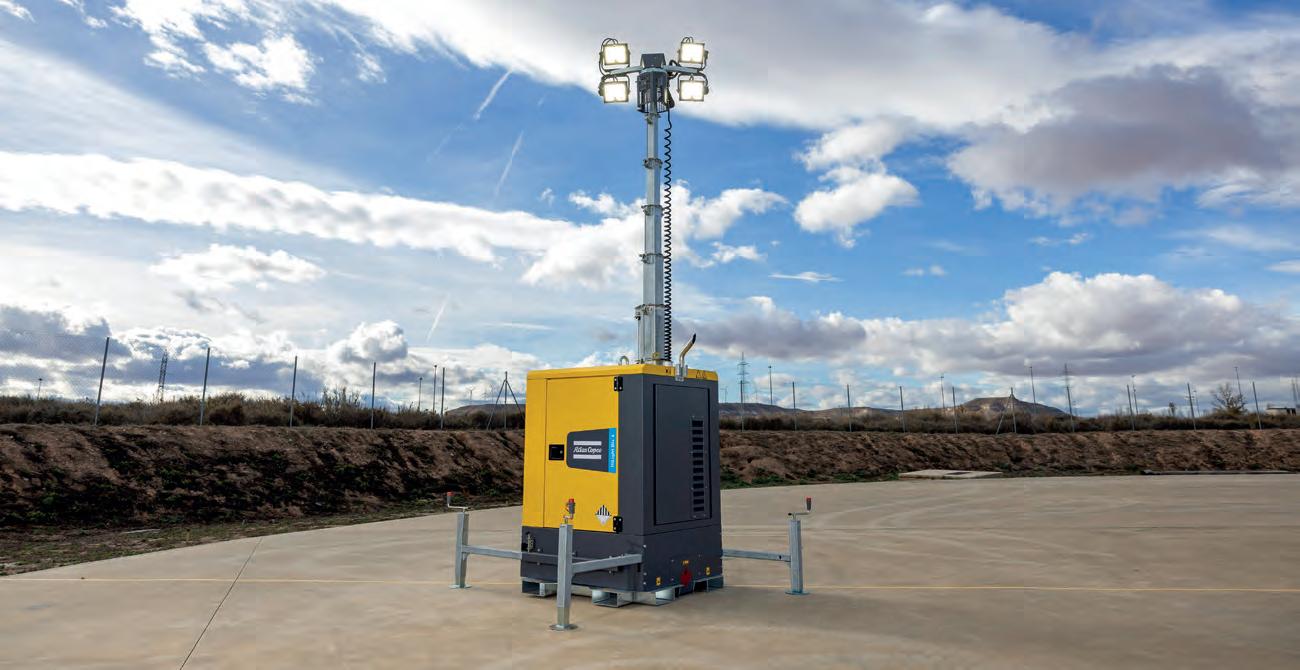


47 The next-gen planer
Caterpillar machinery has played a key role in the on-going success of Whitleah Asphalt.
AFPA SECTION
50 A peak into the future AfPA recently hosted the annual Transport for NSW Budget Forward Works and Maintenance Program Industry Event. Here’s the full rundown.
COVER STORY
14 Some things never change
SAMI Bitumen Technologies has a proud history of innovation and growth across the globe. But what’s in store for the future?
ROADS REVIEW
19 We ask the industry how it can work more with the community to deliver fit-forpurpose infrastructure.
COMMUNITY SUPPORT
20 Changing lives together Fulton Hogan has joined forces with the Clontarf Foundation to support young Aboriginal and Torres Strait Islander men.
23 Building communities for 50 years Reinforced Earth is delivering innovative solutions that will satisfy community needs for decades to come.
26 Laying the path
A social enterprise is attracting, recruiting and training more females and non-binary people into the asphalt sector.
INNOVATION
30 The gateway to innovation
The NTRO has been busy reimagining its long-standing certification framework for infrastructure products.
TECHNOLOGY
34 Holistic tracking
Teletrac Navman is encouraging a greater use of telematics to better manage health and safety, location, preventive maintenance, and utilisation.
MACHINERY & EQUIPMENT
37 Leading industry together Wirtgen and Stabilised Pavements Australia have formed a strong bond over two decades, with both benefitting from a loyal partnership.
40 Creator to pioneer
The SB-3000e is among the latest in Astec Industries’ shuttle buggy and material transfer vehicle range.
43 More than meets the eye
MBE has established a reputation for designing and manufacturing robust road construction equipment. Here’s how.
NATIONAL PRECAST
52 Project report: St Peters Interchange
One of National Precast’s members has been engaged to supply critical precast concrete elements on a major Sydney project.
EVENTS
54-57 A rundown of a number of upcoming events worth keeping an eye on.
REGULARS
58 Contracts & Tenders
An update on some of the contracts and tenders recently awarded or put to market across the Australian infrastructure sector.
Below: Community and the future are topics we explore in-depth inside this edition of Roads & Infrastructure Magazine.

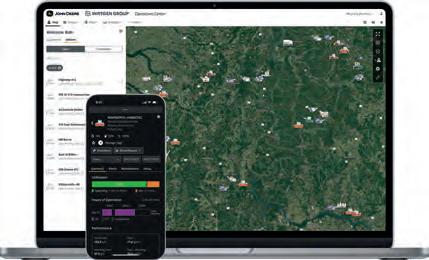





PROVIDING OPPORTUNITIES TO SUCCEED
WHETHER IT BE THROUGH VOLUNTEERING, mentoring or financial contributions, companies across our industry are aiming to make an impact. In this edition, we shed light on how the industry is giving back.
Fulton Hogan and the Clontarf Foundation have formed a strong partnership, helping to create brighter futures for young Aboriginal and Torres Strait Islander men. Clontarf helps young men to attend school, finish Year 12 and enter employment. By providing financial and resource support, as well as employment opportunities, Fulton Hogan is maintaining its strong community focus through its passionate support of Clontarf’s important initiatives.
The Wirtgen Group is also supporting its customers and partners to achieve community oriented infrastructure works. Stabilised Pavements Australia is a longterm partner of Wirtgen, a relationship that’s getting stronger by the day. Important topics such as sustainability, community considerations and innovation are prioritised by both organisations, which is exemplified by the contributions by both towards the infrastructure sector.
Reinforced Earth is also playing its role, enabling local communities to actively engage in infrastructure works and dictate how said works can best benefit motorists and pedestrians. This includes a strong focus on minimising impacts and delays on the community during major infrastructure works.
Also in this edition, we delve into the National Transport Research Organisation’s brandnew certification program, which looks set to transform the certification framework for infrastructure products for the better. Described as a potential “one-stop-shop” for transport product evaluations, NTRO Certification will provide procurers and users confidence in new-to-market and innovative products. The brains behind this framework explain why it’s needed and how stakeholders can get involved.
Roads & Infrastructure Magazine also shares its first preview of the brand new ‘Converge’ construction event. Converge is an expo that for the first time will bring together Municipal Works and Commercial and Civil Construction, to provide attendees a glimpse at Australia’s infrastructure future. Prospective attendees and exhibitors can learn how the event will support industry stakeholders to come together and exchange solutions that will empower the construction sector for years to come.
Key industry representatives also shed light on the different ways in which the sector can better engage and deliver on the needs of the community.
This and much, much more in the latest edition of Roads & Infrastructure Magazine
Happy reading!
Tom O’Keane Roads & Infrastructure
Magazine
COO
Christine Clancy christine.clancy@primecreative.com.au
PUBLISHER
Sarah Baker sarah.baker@primecreative.com.au
MANAGING EDITOR
Lisa Korycki lisa.korycki@primecreative.com.au
EDITOR
Tom O’Keane tom.okeane@primecreative.com.au
JOURNALIST
Jennifer Pittorino jennifer.pittorino@primecreative.com.au
HEAD OF DESIGN
Blake Storey
ART DIRECTOR Bea Barthelson
BUSINESS DEVELOPMENT MANAGER
Brad Marshall brad.marshall@primecreative.com.au
CLIENT SUCCESS MANAGER
Salma Kennedy salma.kennedy@primecreative.com.au
HEAD OFFICE
Prime Creative Pty Ltd
379 Docklands Drive, Docklands VIC 3008 Australia p: +61 3 9690 8766 enquiries@primecreative.com.au www.roadsonline.com.au
SUBSCRIPTIONS +61 3 9690 8766 subscriptions@primecreative.com.au
Roads & Infrastructure Australia is available by subscription from the publisher. The rights of refusal are reserved by the publisher.
ARTICLES
All articles submitted for publication become the property of the publisher. The Editor reserves the right to adjust any article to conform with the magazine format.
COVER IMAGE SAMI Bitumen Technologies.
COPYRIGHT
Roads & Infrastructure Australia is owned and published by Prime Creative Media. All material in Roads & Infrastructure Australia is copyright and no part may be reproduced or copied in any form or by any means (graphic, electronic or mechanical including information and retrieval systems) without the written permission of the publisher. The Editor welcomes contributions but reserves the right to accept or reject any material. While every effort has been made to ensure the accuracy of information, Prime Creative Media will not accept responsibility for errors or omissions or for any consequences arising from reliance on information published. The opinions expressed in Roads & Infrastructure Australia are not necessarily the opinions of, or endorsed by the publisher unless otherwise stated.
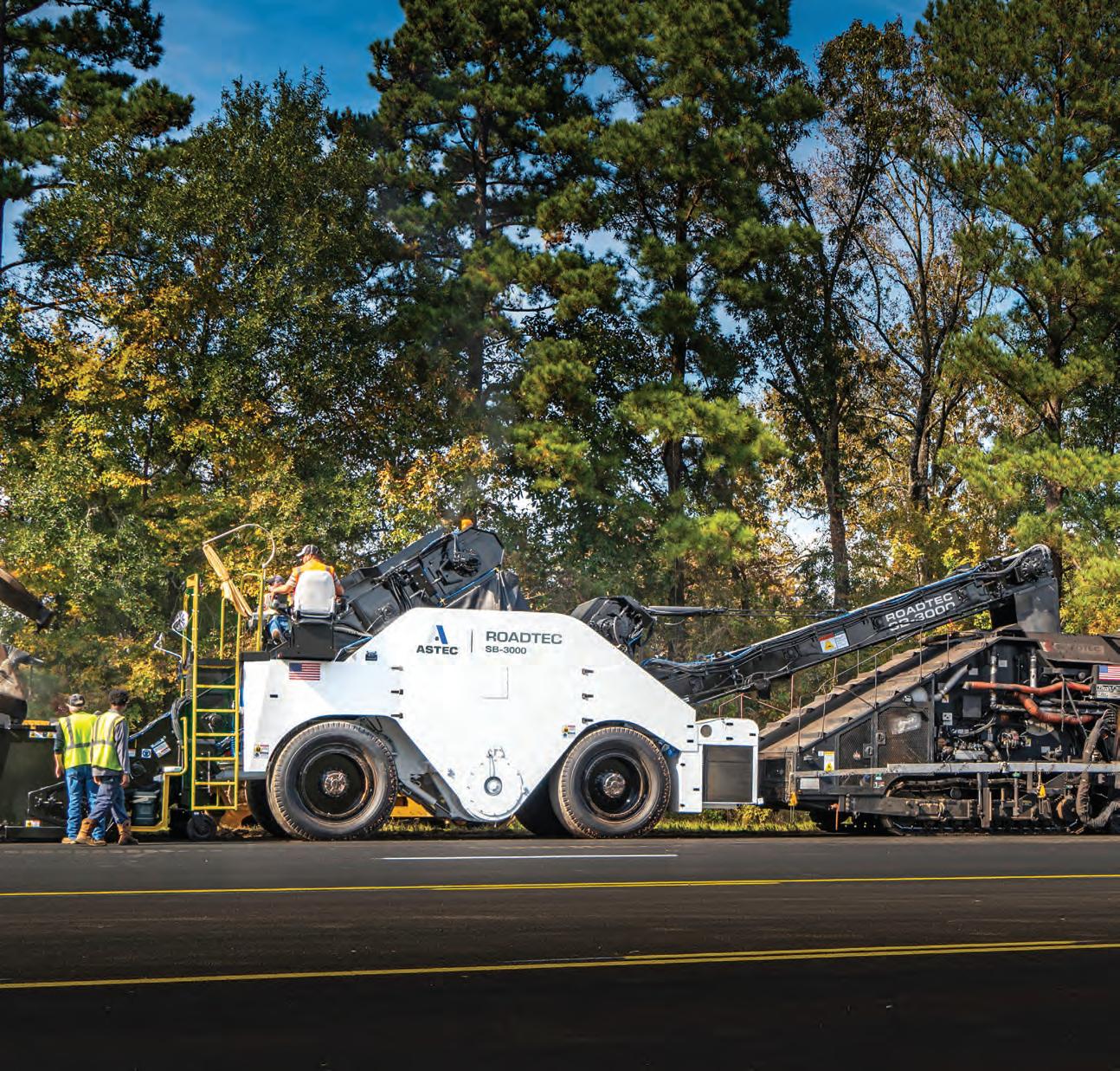
Roadtec Shuttle Buggy ® SB-3000
Astec revolutionised the paving industry with the introduction of the Shuttle Buggy, and now the SB-3000 sets a new standard in material transfer vehicles. Effortless maintenance, unmatched performance, and four steering modes for ultimate agility to keep paving seamless. Experience groundbreaking innovation with the patented Ground Crew Control Station for the ultimate user experience and protection. The SB-3000 isn’t a machine, it’s a revolution in material transfer, built on Astec’s legacy of industry firsts.
BUILT TO CONNECT

ROI’S NOW OPEN FOR HIGH SPEED RAIL PROJECT
The High Speed Rail Authority (HSRA) has opened up Registrations of Interest (ROIs) as industry engagement ramps up on the High Speed Rail project between Sydney and Newcastle.
The ROI represents the first stage of the future high speed rail network that, when complete, will connect Melbourne, Canberra, Sydney and Brisbane, along with regional centres between the four cities.
The Authority extends the invitation for Australian and international businesses, contractors, suppliers, service providers, operators, financiers, and industry bodies to register their interest to participate in upcoming industry engagement opportunities.
They’ll have the chance to provide feedback and insights into local manufacturing and building local workforce skills, optimising city and region-shaping opportunities, integrating high-speed rail technologies and identifying optimal packaging strategies for efficient delivery of the works.
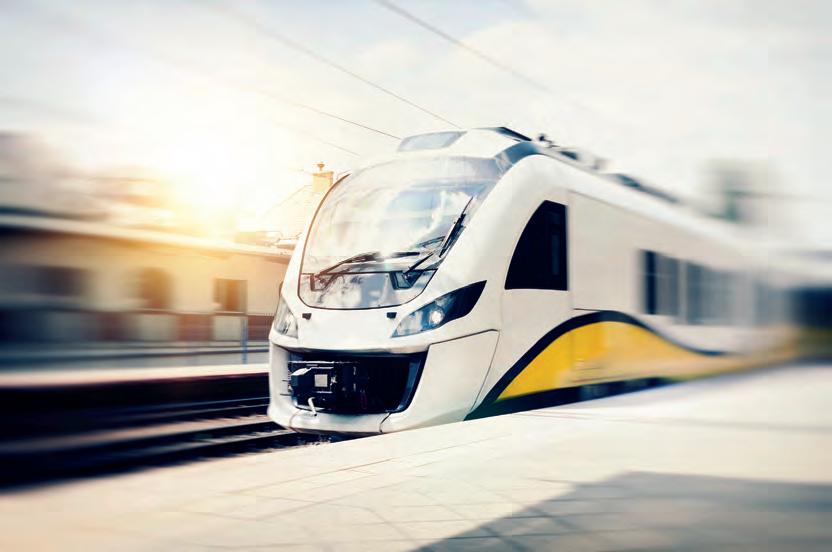
The HSRA is tasked with developing a detailed business case that will determine important elements of the network including proposed corridor alignment, potential station locations, rolling stock, project costs and delivery timeframes
Following a competitive open tender
The High Speed Rail project is central to the Federal Government’s vision for the next decade. Image: stock.adobe.com/Proxima Studio.
process, the Authority recently awarded eight work packages to worldleading expert advisors to assist.
The Sydney to Newcastle rail corridor is the busiest intercity rail line in Australia, with over 14.9 million passengers annually.

DESIGN UP NEXT FOR $940M MILTON ULLADULLA BYPASS PROJECT
The concept design phase for the $940 million Milton Ulladulla Bypass in New South Wales is now underway, following the completion of the first environmental studies.
Once built, the bypass will improve road safety and reduce travel times on the Princes Highway and improve trip reliability, by bypassing Milton and Ulladulla town centres.
Following the completion of preliminary environmental studies, the project will move into the concept design phase where corridor refinements will be explored to ensure the project best delivers improved connectivity and reduced travel times.
As the concept design phase continues, a comprehensive Environmental Impact Statement will also be developed to
ensure construction of the bypass does not unnecessarily impact on local wildlife, while protecting and enhancing biodiversity.
While planning on the bypass continues, Transport for NSW is also considering other short-term opportunities in and around Milton and Ulladulla to make improvements to footpaths, signage and lighting.
The Federal Government is investing $752 million in the Milton Ulladulla bypass. Image: Transport for NSW.

Building Brilliance: Where Construction Meets Intelligence
Komatsu’s Smart Construction
Intelligent Machine Control (iMC) 2.0 simplifies operations with advanced automation technology, ensuring your team achieves peak productivity on every job site.

FUNDING AGREEMENT LOCKED IN FOR 2032 BRISBANE GAMES INFRASTRUCTURE
A funding agreement has been signed between the Federal and Queensland governments for the first five Minor Venue Program projects, in what is a major milestone for infrastructure development for the Brisbane 2032 Olympic and Paralympic Games.
The agreement features agreed project milestones and Commonwealth payments for projects such as the Chandler Indoor Sports Centre and Precinct Works, upgrades to the Brisbane Aquatic Centre, Sunshine Coast Stadium, Sunshine Coast Mountain Bike Centre, and the new Sunshine Coast Indoor Sports Centre.

This Federation Funding Agreement also comprises $935 million in funding for 16 different projects. Works on these projects will aim to deliver accessible, inclusive and
fit-for-purpose sporting and community infrastructure and construction targets that achieve sustainability and provide opportunities for women, First Nations people, as well as apprentices.
The Federal Government is investing up to $3.435 million to support the delivery of key venue infrastructure.
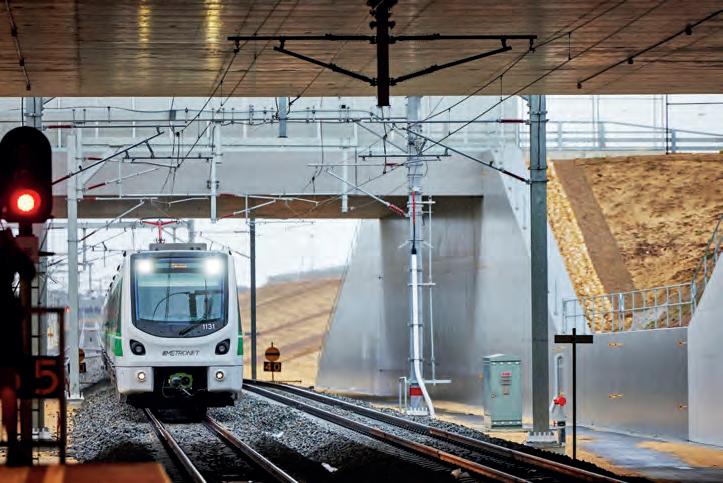
This consists of up to $2.5 billion for the Brisbane Arena project and the 16 Minor Venues Program up to $935 million.
Both governments are working together to ensure that this infrastructure can benefit the long-term needs of the community and is ready in time for the Games.
METRONET YANCHEP RAIL EXTENSION NOW OPEN
The three station upgrades include the modernisation of station facilities and parking spaces. The state’s new C-series trains are now running on the Yanchep Line, in what is a debut for the new generation trains. The C-series trains include higher-backed seats, upgraded displays and increased comfort and reliability for commuters.
The project has also delivered three green fauna bridges – the first of their kind over rail in Western Australia – providing native wildlife a safe crossing over the rail corridor and maintaining habitat connectivity in the Ningana Bushland.
The METRONET Yanchep Rail Extension is now open, with 14.5 kilometres of new rail from Butler to Yanchep and new stations at Alkimos, Eglinton and Yanchep in Western Australia.
These works will help to support ongoing growth in the area and reduce traffic congestion; while also providing three tracks so trains can swap directions and return to Perth.
Construction on this project began in late 2019 and has so far supported 1370 local jobs. A total of 3292 piles have been used, along with close to two million cubic metres of earth that was moved during construction.
The Brisbane Olympic Games will place high demand on Brisbane’s transport and community infrastructure. Image: Queensland Government.
More than 8500 people came together from across Perth to celebrate the completion of the METRONET Yanchep Rail Extension Project. Image: METRONET.




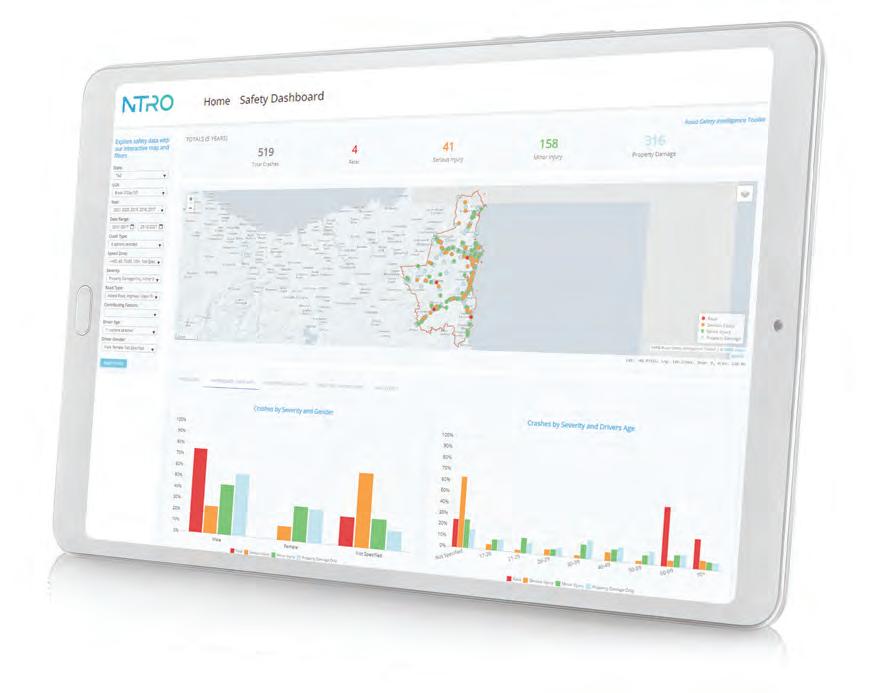
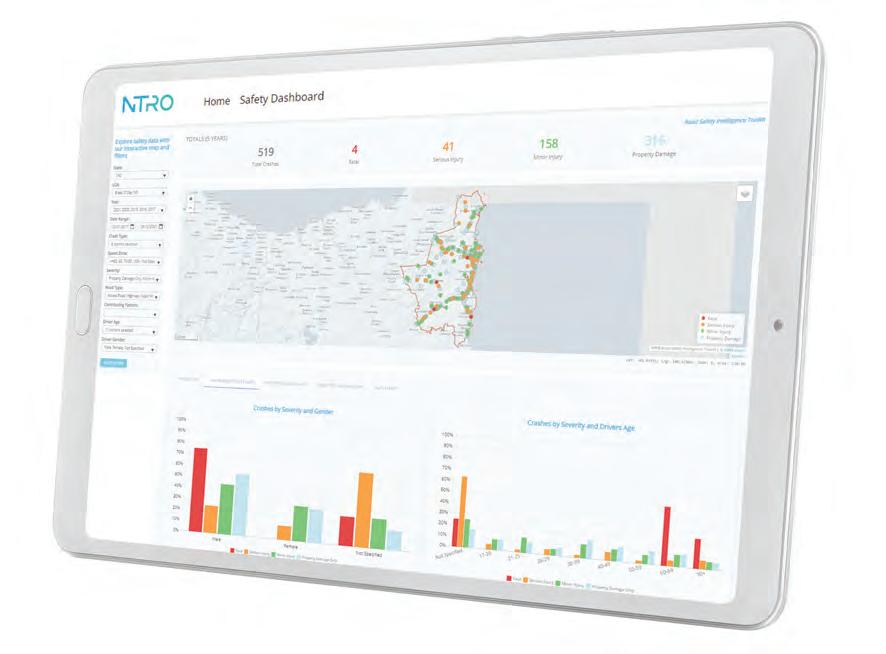






NEXT PHASE UNDERWAY FOR GYMPIE ROAD BYPASS
The project will provide significant benefits to local and visiting motorists. Image: stock. adobe.com/daizuoxin.


Key investigations will soon get underway on the Gympie Road Bypass Tunnel, marking the next stage of works on the Queensland project.
The Gympie Road Bypass Tunnel is a proposed seven-kilometre connection between Kedron and Carseldine and aims to reduce commuter times for travellers throughout Brisbane’s growing region.
The connection will potentially provide increased productivity and efficiency for vehicles and freight. This will be achieved by allowing motorists to skip 19 sets of traffic
lights, therefore saving drivers up to 32 minutes per day.
Traffic and ecological surveys are underway and will help to inform the next stage of planning on the project.
Ecological surveys aim to identify and understand the flora and fauna species present within the corridor and inform environmental considerations and approval requirements.
Traffic surveys will be conducted across more than 200 locations to develop a detailed understanding of traffic movements
$500M IN FEDERAL GRANTS OPEN TO CITIES AND SUBURBS
Applications are now open for more than $500 million of Federal funding for cities and suburbs across Australia.
throughout the corridor and inform future planning to ensure the most efficient integration with the broader network.
This year’s Queensland State Budget included a $318 million commitment over three years to enable further work to undertake approvals and preconstruction investigations.
Gympie Road will remain as a free alternative for motorists with improved travel times to be experienced along the surface due to an estimated 40,000 vehicles per day using the tunnel.

The $150 million urban Precincts and Partnerships Program (uPPP) will provide funding for the design and delivery of urban precincts that transform cities and suburbs.
The uPPP complements the regional Precincts and Partnerships Program (rPPP), which opened in August 2023 to support the delivery of precincts in regional, rural and remote Australia.
The program aims to bring together governments, communities and businesses through collaboration and joint investment


to deliver precincts that build better cities and more liveable suburbs.
The Thriving Suburbs Program has allocated $350 million in grants, to fund community infrastructure across Australia’s capital cities, suburban and peri-urban communities, such as libraries, parks, and sporting and cultural facilities.
The Federal grants will help local municipalities and governments to provide infrastructure upgrades and expansions. Image: stock.adobe. com/Southern Creative.

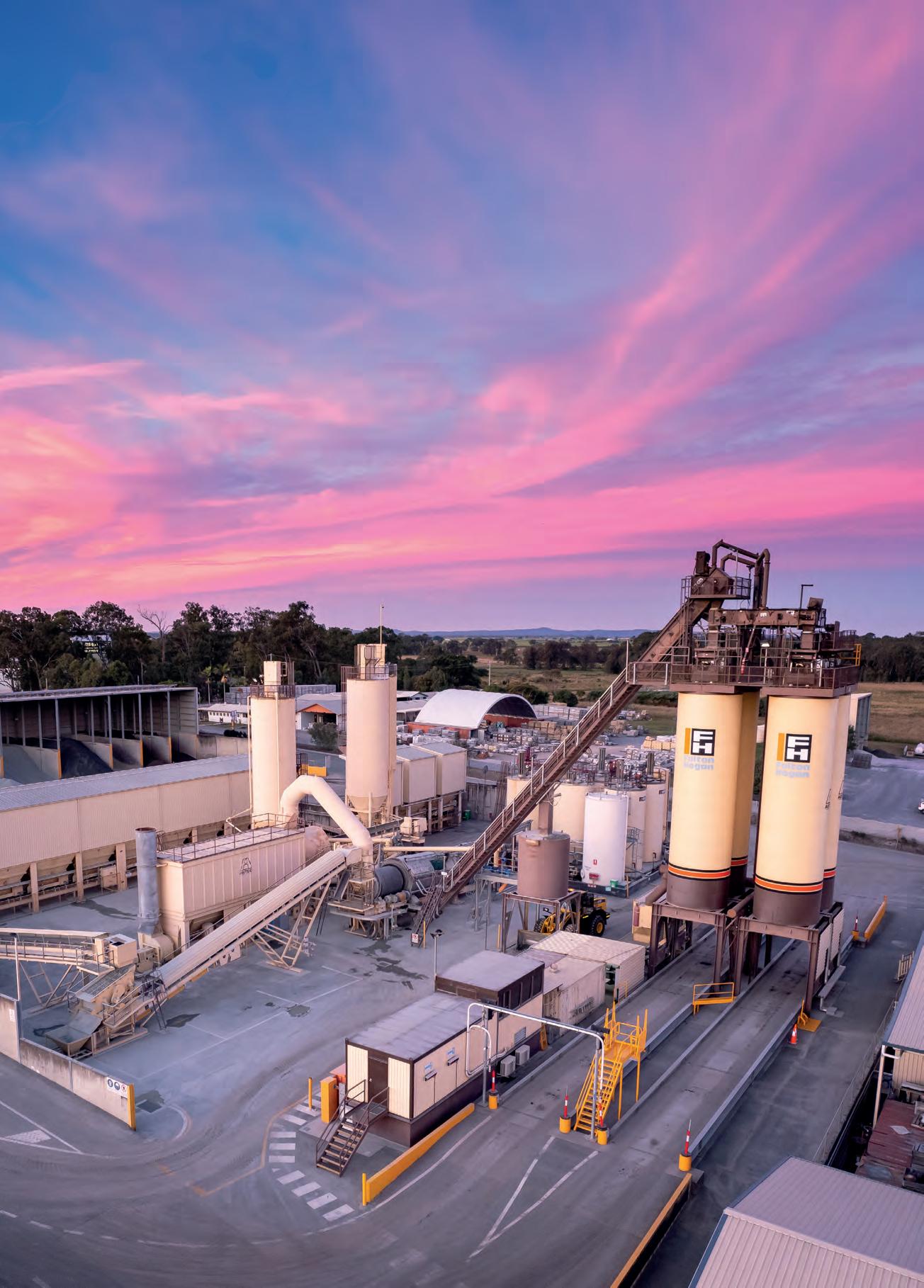

NEW APPOINTMENTS TO NATIONAL TRANSPORT COMMISSION
The Federal Government has announced new appointments to the National Transport Commission (NTC).
Loretta Lynch and Michael Byrne joined as new Commissioners effective from 15 July 2024 until 14 July 2027.
The new appointments were agreed upon by ministers from the Infrastructure and Transport Ministers’ Meeting. This brings together ministers from the federal and state/territory governments.
Byrne has extensive experience in the infrastructure, global logistics, and supply chain sectors, as well as government and private sector board memberships.
Lynch has 30 years’ experience in the

international and domestic rail, construction, resources and public transport industries. Infrastructure and transport ministers also supported extending the appointment of Jon Whelan for a full term until 31 December 2026.
The new appointees will guide the strategic direction and governance of the NTC going forward. Image: stock.adobe. com/AlexandraDaryl.
Whelan is Chief Executive of the South Australian Department for Infrastructure and Transport, and brings significant experience in major transport and infrastructure project delivery, government relations and corporate governance to the role.
QLD BUDGET: WHAT’S IN STORE FOR INFRASTRUCTURE
The Queensland Government’s four-year capital program now consists of a record $107.262 billion funding package, with a focus on decarbonising Queensland’s energy system and preparing the state for the Brisbane 2032 Olympics and Paralympics Games.
This includes an additional $62 million over four years from 2024–25 and $14 million per annum ongoing to 2032–33 for the preparation of additional Project Validation Reports and establishment costs for the Games Venue and Legacy Delivery Authority.
Project highlights also include a $5.5 billion funding boost for the construction of a new 37.8-kilometre Direct Sunshine Coast Rail Line between Beerwah and Maroochydore.
(Stage One), Coomera to Nerang will reduce pressure on the M1 by providing an alternative route for the growing communities and commercial hubs of Helensvale and Coomera.
At a total cost of $3.026 billion, the 16-kilometre Stage One is expected to progressively open to traffic in late 2025.
Another highlight is the ongoing Bruce Highway Upgrade Program, which includes total budgets of $1.730 billion to construct the Rockhampton Ring Road, $1.162 billion to construct Cooroy to Curra (Section D), $948 million for the upgrade between the Gateway Motorway and Dohles Rocks Road (Stage 1), and $336 million towards a bypass of Tiaro to increase the flood immunity, safety and

Construction of the third stage of the Gold Coast Light Rail will connect to the existing Gold Coast Light Rail, providing eight additional stations, at a total estimated cost of $1.219 billion.
A further $5.75 billion has been committed for the Logan and Gold Coast Faster Rail upgrade, with a plan to increase the number of tracks between Kuraby and Beenleigh from two to four tracks, with modernised rail systems, station upgrades and level crossing removals along this 20-kilometre corridor.
Brisbane 2032 infrastructure
The 2024–25 Queensland Budget provides for total capital expenditure for Brisbane 2032 venues infrastructure of $7.1 billion over nine years to 2032–33.
This includes additional funding off the back of the State Government’s Sport Venue Review, which helped to optimise spend for sports venue investment.
The venues infrastructure program comprises the Brisbane Arena ($2.5 billion), upgrades to the Queensland State Athletics Centre and refurbishment of the Gabba Stadium and Suncorp Stadium ($2.7 billion), and 15 new or upgraded venues under the Minor Venues Program ($1.9 billion).
Total forecast expenditure for the venues’ infrastructure program over four years to 2027–28 is $3.247 billion.
SAMI BITUMEN TECHNOLOGIES HAS A PROUD HISTORY OF INNOVATION AND GROWTH ACROSS THE GLOBE. ROADS & INFRASTRUCTURE MAGAZINE LOOKS AT THE ICON’S PAST, PRESENT AND FUTURE TO LEARN WHAT’S NEXT FOR THE COMPANY.
SOME THINGS NEVER CHANGE
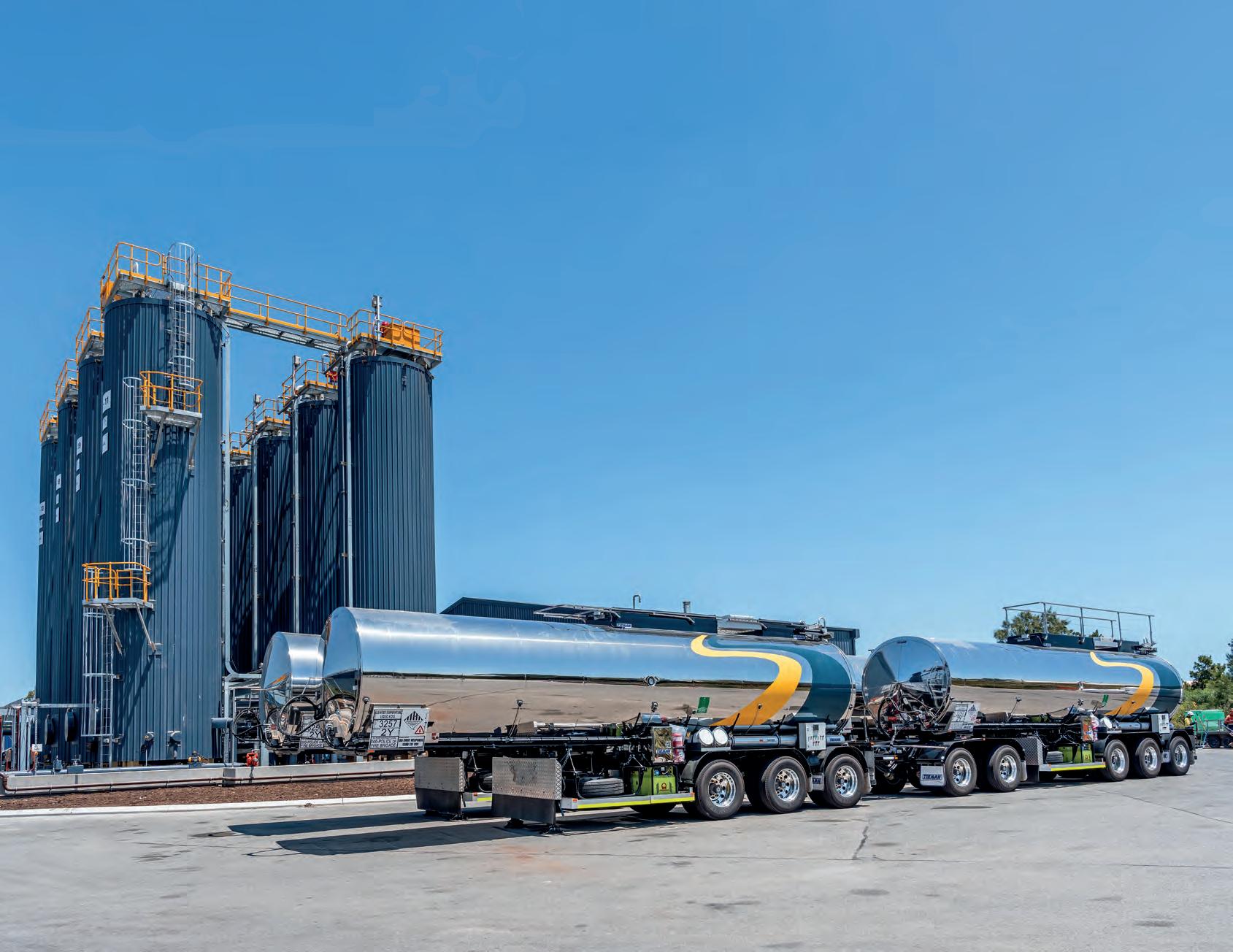
If you’ve got anything to do with the roads sector, chances are you’ve heard of SAMI Bitumen Technologies.
Now a well-established developer of innovative road surfacing products and technology, SAMI Bitumen Technologies’ story, as well as its mission, goes some way to explain why the company has been – and continues to be – highly successful.
SAMI Bitumen Technologies was formed in 1978, born from a need for further innovation across the bitumen sector. From the beginning, SAMI’s influence and impact on the sector was clear for all to see, leaving an impression that’s helped to shape the industry today.
As Gerard Gnanaseelan, SAMI Bitumen Technical Manager explains, the company bolted out of the gates to deliver improvements to what was available at the time.
“We’re a company with a long history of bringing about innovative products in the bitumen industry,” he says.
“SAMI introduced the best polymer modified binders (PMB) to the Australian market in the early ’90s. From those humble beginnings in St Peters, New South Wales, we’ve grown to be a major bitumen and PMB supplier in the Australian bitumen industry.”
One of the biggest factors in SAMI’s early (and on-going) success was the backing of parent company COLAS.
Regarded as one of the premier bituminous product designers and manufacturers in the world, the Frenchbased supplier entered Australia in 2008 following the acquisition of SAMI (now part of the COLAS Group).
COLAS is named after the terms ‘COLd’ and ‘ASphalt’. Fittingly, SAMI’s name also derives from the innovative products that
it manufactures – and mostly importantly – represents.
“Our early success was also thanks to the development of our highly successful, signature product for ‘strain alleviating membrane interlayer’,” Gnanaseelan says.
“This is the acronym by which SAMI derived its name”.
“The technical expertise and R&D capability that is backed by our parent company COLAS is currently unmatched in the country. It’s one of the many reasons why SAMI has been capable of introducing new and innovative products regularly in the market for the past decade.”
While product innovation is at SAMI’s core, it’s a commitment to people and communities that drives the company forward.
NEW DIRECTION
Such is SAMI’s commitment to its staff
Images: SAMI.

and customers, senior leaders within the business recently began discussions around what ‘SAMI’ meant in the market.
This conversation also led to considerations around what the company stands for, literally and figuratively. This existential assessment inspired one of SAMI’s biggest changes. As Sebastien Chatard, General Manager SAMI Bitumen Technologies explains.
“SAMI now stands for ‘Safety, Assertiveness, Motivation and Innovation’. This better reflects who we are as a company and where we’re going,” he says.
“We’re much more than just a single product. The most important thing is who we are as a group.”
SAMI now produces significantly more products than when it was first named. It also has more considerations, including diversity, sustainability and safety, on top of its product development – all key reasons behind the name change.
Safety, Assertiveness, Motivation and Innovation are buzz words that are used by many companies across Australia and the globe, so what do each of these words actually mean to SAMI? Chatard explains.
“Safety is a big consideration for us,” he says. “We want to go home to our family with confidence that the next day we will be working safely and in good conditions.
“Assertiveness is our people. It means that everyone is working aggressively towards our end goal, which is to be the very best that
business, you’re pleased to give back, so we want to keep our people motivated.
“Innovation and services are what we’re most known for, our technical ability, whether that’s around new products or customer services such as the different logistic solutions we offer, as well as our customer portal and our technical support.”
Gnanaseelan says the company culture has always encompassed these values, but applying these principles within the name exemplifies how they each contribute to SAMI’s identity.
“They reflect our core values and who we are,” he says. “Which is why the first is centred around safe operations to ensure that our community, both internally and externally, does not have their wellbeing hindered by our actions. It’s also about ensuring that the targets or goals that we set are successfully accomplished.
“We’re also proud to be an employer of choice for all our current and future employees, which is supported by the leadership of our senior management, who are constantly thriving to achieve this.
“All of the above drives the innovative company that we are.”
Chatard says the name change, from a technical term and product to a peoplefocused entity, reflects SAMI’s evolution in becoming a more holistic company. He adds that this won’t affect the company’s strong focus on product innovation.
“I come from a technical space and having

SAMI Bitumen Technologies is now as focused as ever on its people, creating a positive culture that supports innovation and growth.
SAMI Bitumen Technologies’ new logo better reflects its purpose and process.



Chatard and the SAMI team, both the logo and acronym changes mean more. It’s seen as ushering in a new vision and outlook for the future.
Chatard believes the new logo better reflects SAMI’s global position and local network.
“Our new logo is two paths, one through the sea, which shows importing bitumen, and the other, which represents the Australian roads where our bitumen is being placed,” he says. “It shows both of these sides of our business coming together.”
SAMI’s commitment to the Australian market has always been a constant.
Even though it has import facilities and manufacturing facilities in New South Wales, Queensland, Western Australia and Victoria, SAMI isn’t slowing down any time soon.
Chatard says SAMI’s future goals and focus remain consistent to this day.
“When I look back 15 years, the company has grown and so has our supply network and facilities. We’ve invested substantially in our facilities, and we’ve always had a strong commitment to the Australian market,” he says. “Quality continues to be one of the biggest focus points for us going forward. So does maintaining and improving our product and to be recognised as doing such.”
One of the keys to this continued growth has been SAMI’s relationships with local markets and regions.
Scott Olsen is the State Manager for
commitment is striving to make things easier and more streamlined for customers. He uses the development of the My SAMI application/portal as an example.
“Internally, it’s like a one-stop-shop for our production, quality and dispatch. It helps with our accounts, and we can use our batch cards to identify what materials we might need to supply or need in the future,” he says.
“For our customers, they can view new and recent orders, can see delivery updates and view the test report, without having to ring anyone.”
Olsen has also seen SAMI’s investment into the regions first-hand. SAMI replaced its old Fremantle terminal and provided additional bitumen storage and processing capabilities with the opening of its import terminal and processing plant at Kwinana a few years ago.
“There’s been a lot of capital expenditure into our facilities, and not just for us but also across the East Coast,” Olsen says. “I’m sure there’s more on the way too.”
Chatard says this investment is well supported by the future ambitions of the wider COLAS Group.
“Our clients believe in us more and more and to keep delivering, we need to invest. Our parent company is ready to support the development of our activity in Australia,” he says.
Despite being one of Australia’s largest bitumen technology developers and providers, SAMI Bitumen Technologies’ culture reflects that of a smaller business that’s committed to local investment.
“OUR CLIENTS BELIEVE IN US MORE AND MORE AND TO KEEP DELIVERING, WE NEED TO INVEST. WORLDWIDE, THE COLAS GROUP IS READY TO INVEST FURTHER BECAUSE THEY VIEW AUSTRALIA AS A PRIMARY DEVELOPING MARKET.”
Western Australia and says that trust has never been an issue, but it is something that needs to be earned.
“In Western Australia we’ve got a large number of long-time and repeat clients and that’s all up to trust. They trust us to bring the right innovation, the right materials and the high quality to ensure that they can deliver on their project requirements,” he says.
“We’re as committed as we’ve ever been to grow across the nation. We’ve come a long way in a relatively short period of time and have played a massive part in large local projects, such as our upcoming works on the Tonkin Highway Extension.”
Olsen says another aspect of this
Gnanaseelan adds that community and customer support have been fundamental in SAMI’s growth, as such the company wants to continue to help improve and give back to the domestic bitumen sector.
“We’ve grown from a small-scale supplier to a major corporate company. From one location in New South Wales, we’ve grown to be present in all major cities,” he says. “SAMI has significant investments in these regions, which is why we’re here to stay for good.
“We don’t consider bitumen as a commodity product, that’s why we don’t just stop at sales. We provide technical services and innovative support to customers and the sector as a whole.”
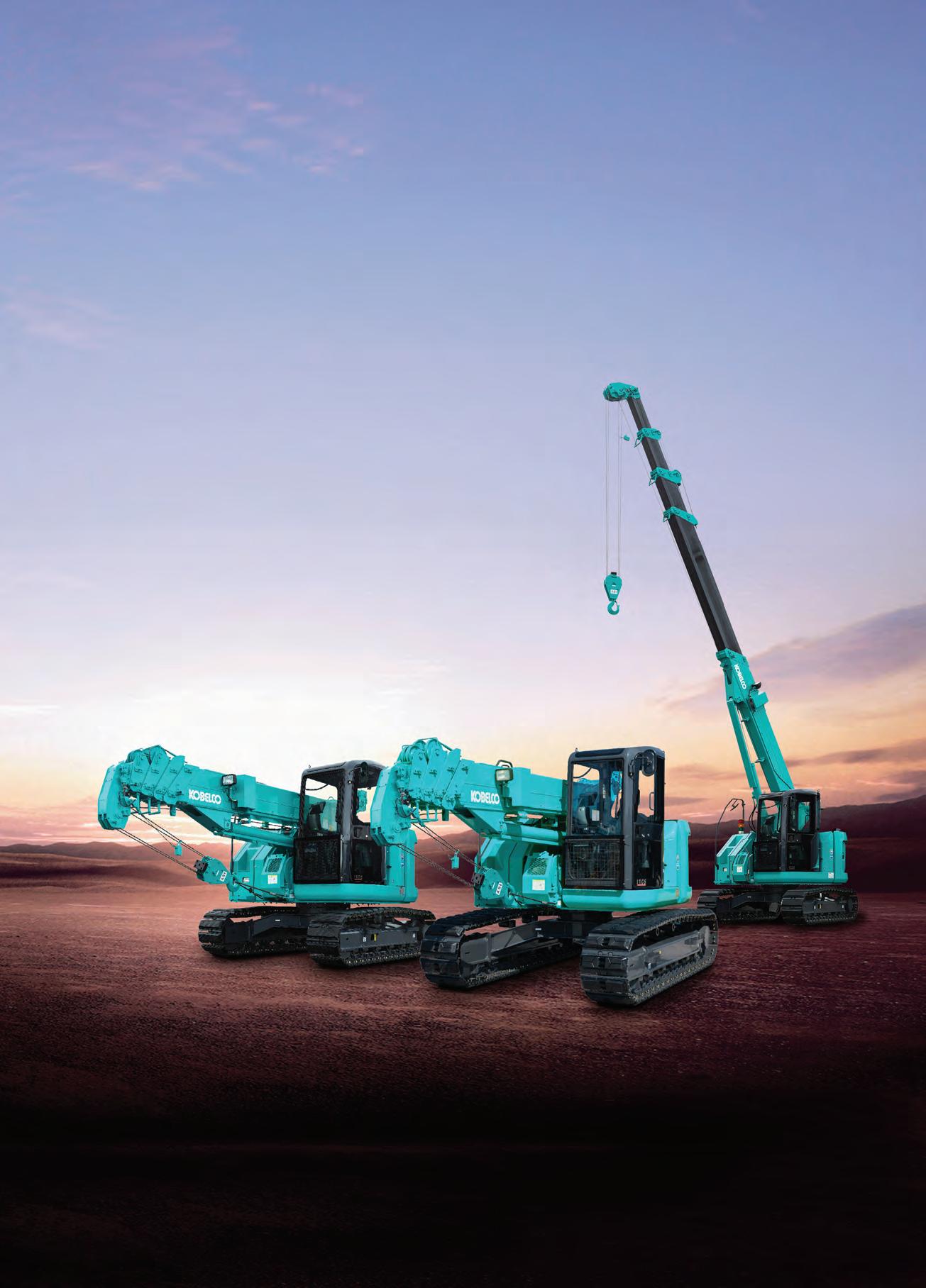
Above, L to R: Sebastien Chatard, General Manager SAMI Bitumen Technologies; Scott Olsen, SAMI Bitumen Technologies State Manager Western Australia.
Left: Gerard Gnanaseelan, SAMI Bitumen Technologies Bitumen Technical Manager.
The 4.9t CK series mini crawlers have high specifications, practical capacities and features designed to be a priority utility crane.
Where working space is restricted, such as road and rail tunneling, underground infrastructure, trenches for utilities, foundation work or work on elevated bridges and rail tracks, these high-performance mini crawlers can be relied upon to get the job done.

TRT are the Asia-Pacific agents for Kobelco providing a full comprehensive end to end solution. Service and parts support 24/7, 365 days a year during the entire life of your crane.
Troy Hand 1800 595 576
sales@trtaust.com.au
www.trtaustralia.com.au

CK90UR
CK120UR


Protect
Our protection systems mitigate the damage caused by natural disasters.

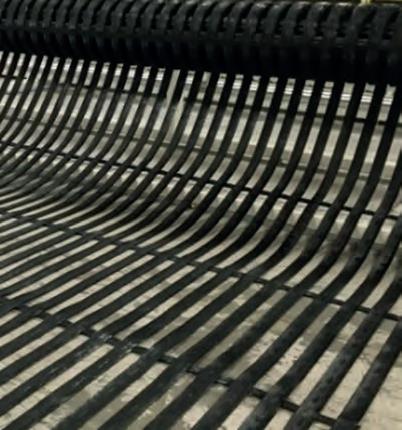
Strengthen
We design and supply materials for geosynthetic soil reinforcement for various applications, such as basal reinforcement and steepen slopes.
Experts in soil structure interaction.
Celebrating 50 years in Australia, Reinforced Earth provides solutions for soil structure interaction to retain, cross, protect and strengthen.


Cross
We deliver structures designed to cross obstacles, including bridge abutments, underpasses, tunnel extensions, cut & covers, culverts, arch bridges and wildlife crossings.
Retain
We tailor earth retaining solutions, from our own Mechanically Stablised Earth walls, to a wide range of other retaining structures.

ROADS REVIEW
THIS MONTH, WE ASKED THE INDUSTRY’S DECISION-MAKERS, ‘HOW CAN INDUSTRY WORK MORE WITH THE COMMUNITY TO DELIVER FIT-FOR-PURPOSE INFRASTRUCTURE?’

TANJA
CONNERS, CEO – AUSTSTAB
In the pavement recycling and stabilisation industry, engaging the community is essential to ensure delivery of fit-for-purpose infrastructure and this can be achieved by hosting public meetings and surveys to gather input and establish advisory committees for ongoing feedback. It can also be achieved by conducting communication programs to raise awareness of the benefits and drivers for the recycling of pavement materials in roads. Regular updates are also important, as well as maintaining open communication channels. Involving the community in project design to ensure an understanding and prioritisation of local needs, while using local workers and suppliers where possible can help to boost the local economy. Implementing strategies to protect the local community from the impacts of noise and emission during road works and to ensure their safety is also paramount. So is addressing environmental concerns with sustainable practices, on top of gathering post-project feedback and building long-term


JIM FRENCH, AUSTRALASIAN SOLUTION SPECIALIST FOR CONSTRUCTION AND ENGINEERING – TELETRAC NAVMAN
Building fit-for-purpose infrastructure comes down to bringing the community along for the ride. This means actively consulting the community about what they want, and then using the feedback to optimise infrastructure planning and development. When there is transparent communication, the community feels included in infrastructure builds, and creates the perception their voice is being heard. It’s also important to take cultural sensitivities into account by asking whether a development is appropriate and fits in with the existing environment. Finally, infrastructure planning and development creates the opportunity to include members of the community, not only through consultation, but by employing locals on the project.
Ima ge: Teletrac Navman.

GANA VARENDRAN, GENERAL MANAGER, NSW/ACT, TRANSPORT & INFRASTRUCTURE – DOWNER
There is increasing expectations from our community to deliver infrastructure that has reduced carbon footprint. Our young cadet and graduate engineers who joined our industry recently have told us that delivering low carbon sustainable infrastructure should be one of our top priorities. Our industry has started to embrace new technology to deliver more sustainable infrastructure solutions. Local government councils are under increasing pressure to deliver more sustainable infrastructure within their limited budgets to their communities. We need to engage more with various local government councils in raising awareness and promote these low carbon infrastructure solutions that deliver quality, cost effective infrastructure that is fit-for-purpose.
ge: Downer.
If you or someone at your organisation is an industry leader and would like to be a part of this monthly column in 2024, please get in touch with Editor, Tom O’Keane: tom.okeane@primecreative.com.au

CHANGING LIVES TOGETHER
FULTON HOGAN IS A KEY SUPPORTER OF THE CLONTARF FOUNDATION, WHICH IS DEDICATED TO IMPROVING THE LIVES OF YOUNG ABORIGINAL AND TORRES STRAIT ISLANDER MEN THROUGH EDUCATION, PARTICIPATION, AND EMPLOYMENT. LEADERS FROM BOTH FULTON HOGAN AND THE CLONTARF FOUNDATION ELABORATE ON THIS PARTNERSHIP.
From little things, big things grow. That’s the core message of the Clontarf Foundation, a charitable not-for-profit who’s existence is underpinned by a passion to create bright futures for its growing participant base.
The Clontarf Foundation aims to provide young Aboriginal and Torres Strait Islander men with the means to improve their education, life skills, self-esteem and employment prospects.
Mark Riley, Zone Manager, VIC and SA –Clontarf Foundation says the organisation has grown significantly since its humble beginnings more than two decades ago.
“I was a volunteer when we started in 2000. We started with 25 boys back then, three of those young men ended up getting drafted into the AFL, then the next year 100 boys showed up to school,” he says. “Now we’ve got about 11,000 academy members in different schools across the country.”
Through incentives, a myriad of engagement activities and formal guidance, Clontarf aims to increase both school attendance and completion among young Aboriginal and Torres Strait Islander students and to provide role models and practical ways to ensure that participants can lead purposeful and healthy lifestyles.
Since that initial class in 2000, Clontarf has helped more than 7000 students to complete Year 12 and attain employment across a wide range of sectors. With 169 participating schools across six states and territories, Clontarf continues to grow on a daily basis.
While sport is central to Clontarf’s program, it’s only the beginning of a journey that fosters positive learning and personal growth.
“Sport plays an important role in the program, but more importantly it’s about having positive role models in a non-judgemental environment so the boys can grow themselves and fulfill their potential,” Riley says. “It’s small things like getting some of the boys out of bed nice and early for training, having a healthy breakfast then we can send them to the classrooms in a more conducive headspace for learning and engaging.”
FOUNDATIONAL CHANGE
“A key part of our program is that the community invites us in first,” Riley says. “We have an extensive scoping and conversation process with the community about the outcomes and what we’re hoping to achieve. It’s not a silver bullet or a Band-Aid, it’s a full-time initiative that’s supported by our communities, families and partner schools.”
Partners who provide financial and resource support play a big part in this mission. One such partner is Fulton Hogan, one of Australia’s largest infrastructure and utility service providers.
Fulton Hogan National First Nation’s Engagement Manager Andrew Craig says both organisations are closely aligned when it comes to their values and beliefs, as well as their passion for change.
“The opportunity to work with the boys has really flourished,” he says. “We’ve had plenty of
The Clontarf Foundation helps to improve the education, life skills, self-esteem and employment prospects for young Aboriginal and Torres Strait Islander men.
Images: Clontarf.

opportunities to bring some of the boys from the program onto our projects, to give them an understanding of who we are and what we do. It’s great to see their excitement and to get them out of their comfort zones.
“Our values of respect, energy, effort, attitude and leadership are the types of things that we try to instil. The respect for not only those around them, such as the teaching staff and their peers, but also their self-respect and the importance of boosting their attendance where they can.”
Fulton Hogan is heavily involved where possible, whether its supporting Clontarf events with facilities such as barbecues, staff volunteering at events and camps, or helping to co-ordinate events.
“Events like our Fulton Hogan Clontarf NAIDOC week football event enables our people to actively engage with Clontarf participants in an environment where the boys feel comfortable, which is on the football field. It allows us to build relationships and talk to the boys about what we do in our industry,” he says.
Craig says employment opportunities, including traineeships and apprenticeships, have been effective in enabling young participants to get a start in the construction sector.
“We encourage those who may not yet have the skills, to have a go. Traineeships and apprenticeships are a perfect early career pathway. You get hands on practical skills while doing some sort of study so you are continually developing your knowledge of the industry while getting the skills and qualifications that they need to help them succeed,” Craig says.
STUDENT SUCCESS
Whether it’s helping out with homework, organising health checks or just having a kick of the footy, Clontarf is able to cater its programs to suit the community and its individuals.
Jonathon Wackwitz joined the program when he first made the transition into high school.
“I’d heard about the program, a few of my cousins had gone through it and my Mum had mentioned it as well,” he says. “I started the program in 2017 when I was in Year Seven. Straight away I felt accepted and welcome.”
Wackwitz, who grew up near Sydney, says the support systems in and outside of school help to ensure that students can establish a positive pattern and approach to education.
“They’re very focused on getting boys to school. At the end of the term, if we had more than 90 per cent attendance, we could go on excursions. They also provided lunches
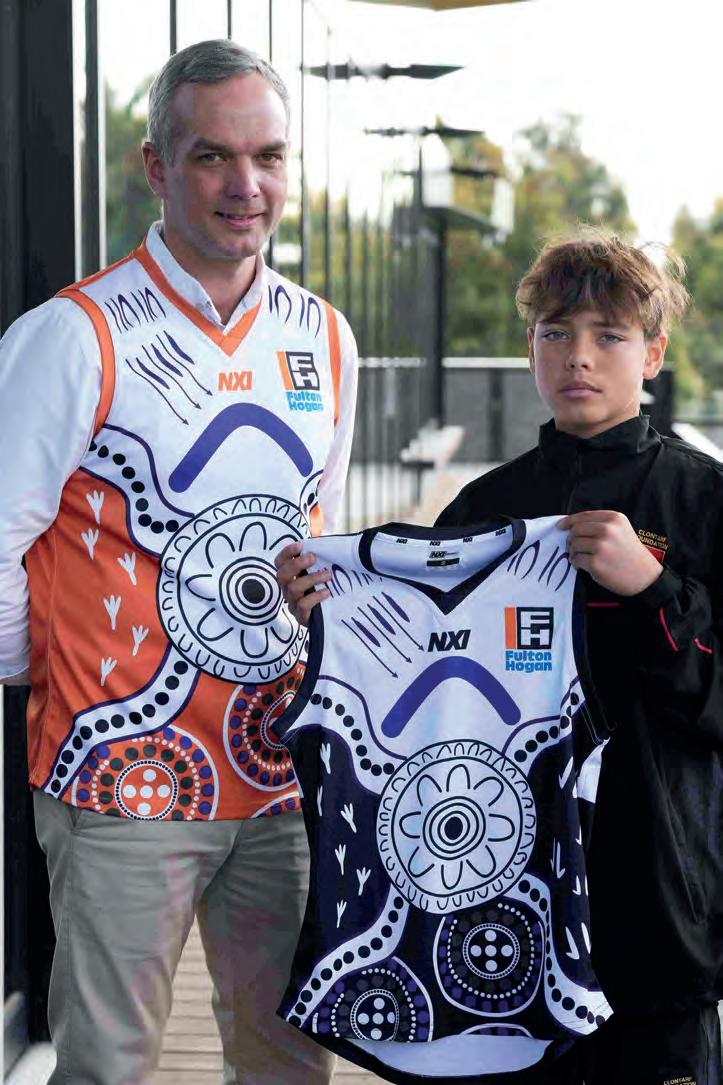
that we called the ‘good bunch lunch’. It’s about rewarding attendance and hard work,” he says.
That support remained after Wackwitz concluded his secondary school education –he’s now a Civil Construction Apprentice on Fulton Hogan’s Eastern Region Construction SEASD project.
“The day that I sent out my resume, I got a call from Andrew (Craig) after about 30 minutes. He mentioned there was a promising opportunity with Fulton Hogan. I did some research about the company and what they do, and it sounded promising. It looked like a great experience,” he says. “I wasn’t sure what I wanted to do, so it was great to have the opportunity to give construction a ‘crack’. If it wasn’t for those connections, I don’t think I’d be where I am right now.
“It’s an amazing program, they’ve opened so many doors for me. Whether it’s providing
accommodation, helping to facilitate school sports, getting a driver’s licence. Whatever young kids need, they support you.”
Wackwitz says another outstanding aspect has been the direct support of Craig and the rest of the Fulton Hogan team.
“Right from the moment I spoke to him, Andrew seemed like a lovely bloke. He’s always been supportive of me, which is something that I don’t take for granted,” he says.
Clontarf is looking to expand, with agreements with new schools and programs already underway.
Riley says that while the on-going success of the Clontarf Foundation is a positive, there’s still a lot more work to be done.
“These boys have so much to give and to be able to see some of them fulfill that is what it’s all about,” he says.
To learn more about Clontarf’s initiatives, visit clontarf.org.au
Fulton Hogan Australia CEO Graeme Johnson and Clontarf student Cliffy War at the Fulton Hogan & Clontarf NAIDOC Football Cup 2024 in Adelaide, SA, pictured with the gameday guernsey that War designed.
A truckload of benefits
Regulatory programs can give you a huge competitive advantage many are yet to realisetake advantage of a TCA-approved provider and get onto the IAP, Smart OBM, TMA, or RIM programs

IAP
Increase your payload to instantly boost productivity, turn around times, and profits.
Smart OBM
Increased payload, unprecedented access, and ability to run PBS enabled vehicle configurations.
TMA & RIM
Applications that provide a level of balance between compliance & productivity.


Reinforced Earth contributes to community infrastructure on a daily basis, such as the Reid-Tonkin Highway in Perth.
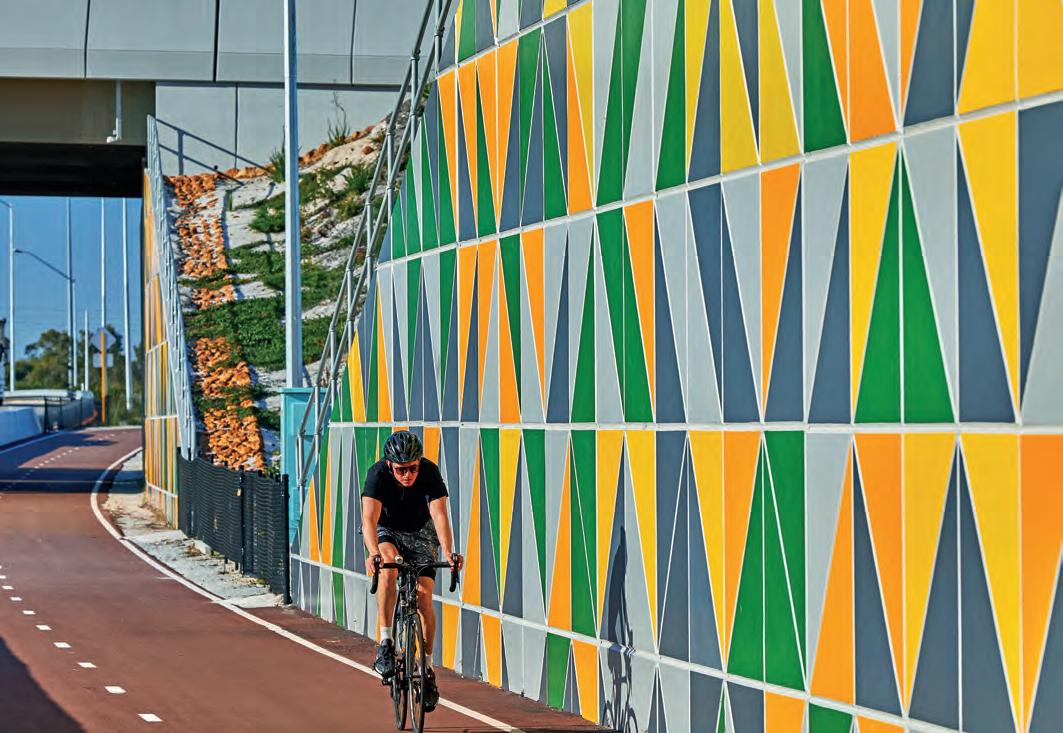
BUILDING COMMUNITIES FOR 50 YEARS
REINFORCED EARTH IS DELIVERING INNOVATIVE SOLUTIONS THAT WILL SATISFY COMMUNITY NEEDS FOR DECADES TO COME. RICCARDO MUSELLA, MANAGING DIRECTOR TOUCHES ON WHY AND HOW THE COMPANY IS SUPPORTING ITS COMMUNITIES ON A DAILY BASIS.
Community is a word that’s intrinsic to infrastructure development. Nearly every single infrastructure project is built to benefit and/or impacts local communities in some way.
Well known for its expertise in geotechnical engineering solutions such as precast, rockfall nets and barriers, geosynthetics and reinforced soils structures, Reinforced Earth doesn’t shy away from its grounded community roots.
Riccardo Musella, Reinforced Earth Managing Director, says community is not only something close to his heart, but also a foundational aspect that’s supported the growth of the company across Australia.
“For our team, it is important that we are an integral part of the communities in which we operate, contributing to the local economy, providing local jobs and enhancing the social fabric of the area,” he says.
A lot of Reinforced Earth’s projects go a long way towards creating new spaces for communities.
One such example is its work on the Drysdale Bypass in Victoria. The completed six-kilometre bypass between Jetty Road and Whitcombes Road is helping to reduce congestion and increase safety on the Bellarine Peninsula. Reinforced Earth was tasked with providing full
height panels and working with the contractor to deliver a retaining wall face for a pedestrian underpass that was interesting and thought-provoking for the young community.
After extensive community feedback and consultation, local school students played a crucial role in the final design, by choosing the inspirational words now etched into the wall.
The uplifting words cast into the walls, include “believe and achieve”, “dream”, “inspire”, “be yourself”, “smile”, and “be the difference”, and were chosen by students from St Thomas Primary School, St Ignatius College and Bellarine
Images:
Reinforced Earth.

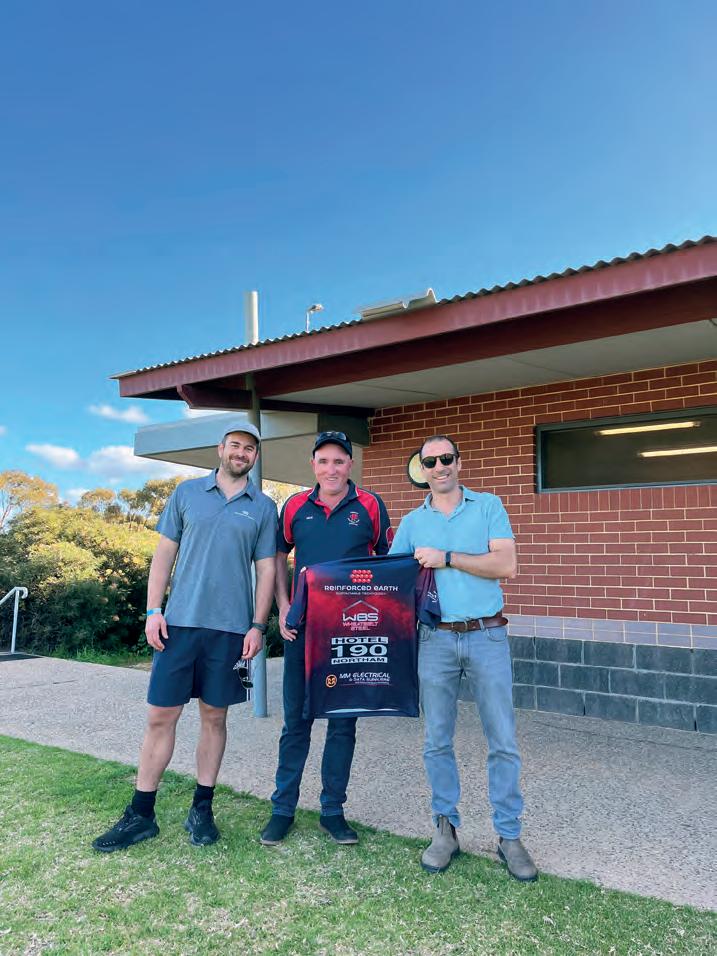
Secondary College.
Musella says it’s projects such as this that ensure that transport infrastructure is not just functional but also visually appealing, while providing an opportunity to establish a strong sense of place and community ownership.
Another example is Reinforced Earth’s works on the Leach Highway Interchange in Western Australia. Reinforced Earth’s TerraTilt precast concrete walls, delivered as part of these works, have helped to increase the safety and reduce congestion along the connection, which was one of Perth’s most dangerous and second busiest intersections, used by 50,000 vehicles daily.
The TerraTilt design is focused on fast and
easy application and erection, helping to minimise delays and other impacts on local traffic around the project.
Another notable project was Reinforced Earth’s works on the Mitchell freeway Extension, specifically the Butler Boulevard underpass. Local Aboriginal artists Nathan Corunna and Darren Hutchens were engaged to paint murals over the top of precast elements. These murals depicted the lakes and swamps in the boodja (land) between Yanchep and Joondalup in Western Australia. This mural is known as Booladarlung Bidi (Pelican tracks).
Such engagement is a big focus of Reinforced Earth’s projects, as
“We have solutions that deal with the mitigation of noise, that aim to not deter from the natural environment and also limit the carbon footprint,” he says. “Our solutions have been developed to cater for geotechnical constraints and we can customise our designs and solutions to respond to what the community desires.
“A big focus of ours is also maximising space for the local community. We’ve had projects where we’ve looked at changing the route to enable the provision of more public space. It’s a really good feeling to be able to drive past one of our projects and know we contributed.”
The selection of cheaper processes and materials is also a big consideration, leading to reduced associated costs for the taxpayer for larger infrastructure works. Reinforced Earth also prioritises the use of local material suppliers wherever possible.
Musella says there’s a detectable sense of pride each time the team completes a
community-focused project.
“We feel as though we are an integral part of the community. After all, about 90 per cent of the work that we do is done for the community,” he says.
“It’s not just building a bridge or a retaining wall, it’s about designing our projects in a way that can benefit not only local people, but also local wildlife. We know how to design our project to be as sustainable and community friendly as possible.”
LOCAL INSIDE AND OUT
Despite having sites across 40 different countries, Reinforced Earth is still firmly grounded in Australia.
Complementing its engineering offices nationwide, Reinforced Earth also owns and operates precast manufacturing sites in key regional areas in Western Australia, Queensland and New South Wales, alongside a site in Perth. Consistent across these regional locations is a passion for seeking out local employees and supporting community-based organisations.
Reinforced Earth is actively engaged and supporting a number of local sporting clubs, as part of its focus on giving back to country areas in Australia. And it is also giving local employees their first entry into the sector.
“You don’t need to live in the city to work for a multi-national engineering company. In our regional areas we’ve been focusing on working closely with local shires and the local labour agency to promote ourselves to prospective employees, enabling people in regional Australia to stay, live and work in their local area,” Musella says.
“We give people the opportunity to come in with little experience and we will train them up.
“Training is a big focus for all our employees; We have a buddy system where we also help to mentor new employees at each of our regional sites, and we’ve been very successful with that.”
Musella says local employees in regional areas have unique local knowledge and are an essential tool in the company’s focus on the community.
“In our regional locations, starting with the factory manager, we look to build our team around them with people from the area. It’s key for us to support the communities in which we operate by employing and training local people, bringing new skills and jobs to regional areas.
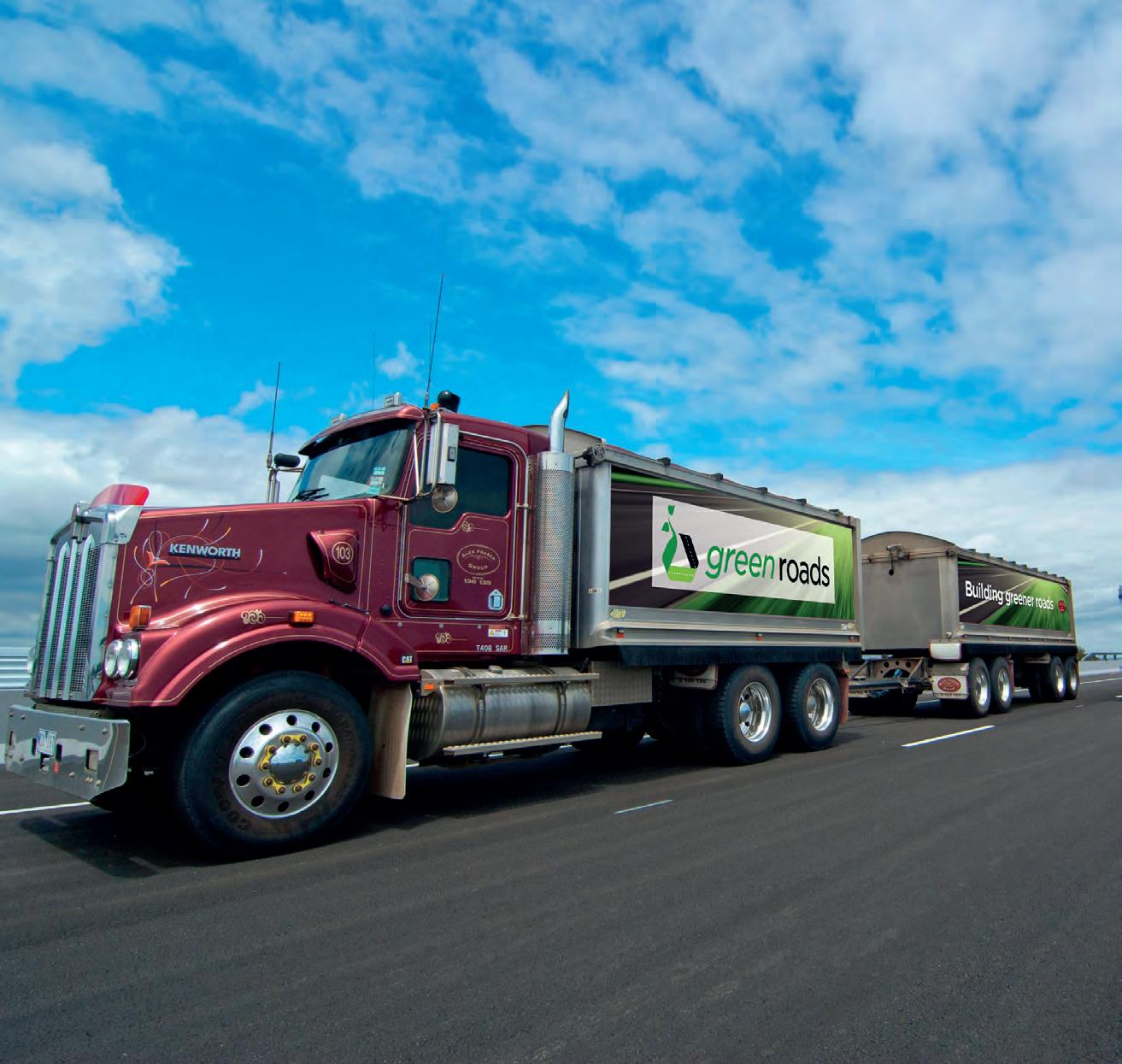

Reinforced Earth prioritises local employment where possible, on top of supporting local sporting clubs that neighbour its production and management facilities.
Rhys Senior, Regional Manager West (left) and Riccardo Musella, RECo Australia Managing Director, pictured at the York Roos Football Club Sponsors Day in Western Australia’s Wheatbelt region.







LAYING THE PATH TO EMPOWERMENT
JENIKA STUBELJ AND ASH MACMAHON’S SOCIAL
ENTERPRISE
AMARAPAVE IS ATTRACTING, RECRUITING AND TRAINING MORE FEMALES AND NON-BINARY PEOPLE IN THE ASPHALT SECTOR. THE SOCIAL ENTERPRISE, ALONG WITH POLICY INITIATIVES FROM MAJOR ROAD PROJECTS VICTORIA, IS HELPING TO
Construction in Australia has long been a heavily maledominated industry. According to 2021 figures from the Australian Bureau of Statistics, women made up only 14 per cent of the construction industry workforce.
Understanding this is not a sector which can become balanced overnight, the Victorian Government has introduced several initiatives aimed at fostering more inclusivity.
This includes the recently published MRPV Roadmap Towards Gender
Equity 2024-2027, which highlights the importance of recognising gender equity as a safety priority in hopes to prompt industry-wide collaboration, and enhance gender diversity in leadership.
This collaboration between Major Road Projects Victoria (MRPV) and the Victorian National Association of Women in Construction (NAWIC), outlines the goals and priorities to support increased gender equity across the civil construction industry.

Amarapave’s goal is to break down stereotypes by supporting females and non-binary people by giving them an entry point into the asphalt sector.
Katrina Rio, MRPV, Director of Social Value and Inclusion, believes the roadmap is a significant milestone in marking a key step towards a more inclusive civil construction industry for everyone.
“This roadmap signifies a collective agreement to driving positive change in the construction sector in a collaborative way,” she says.
“It offers clear guidance and actionable recommendations to enhance gender equity, aligning with various State Government initiatives like the Building Equality Policy and the Victorian Social Procurement Framework.”
In hopes to generate a seismic shift in the asphalt industry where diversity thrives and inclusivity becomes the norm, long-time friends Jenika Stubelj and Ash MacMahon created Amarapave in 2023.
As Stubelj, Amarapave Managing Director, explains, the two first met on the footy field as fierce competitors. They quickly discovered they shared more than just a passion for touch footy, uncovering an eagerness to abolish the gender biases they witnessed in their local social league.
“We bonded over the same attitude that it shouldn’t just be the boys getting the ball, it is about everyone getting an opportunity,” Stubelj says.
“We just wanted to prove a point that there shouldn’t be any bias in sport. And we’ve always had that attitude.”
Amarapave Field Director Ash MacMahon explains how the pair both noticed similar patterns emerging in their professional lives off the footy field.
Images: Amarapave.
“You’ve got to fight a lot harder as a non-male person to get the same opportunities in the industry that some of the males are getting,” they say.
Bonding over unfair injustices, the footy rivals soon turned into business partners, leading a team dedicated to driving positive cultural changes in the asphalt industry.
Through its unique operations, Amarapave passionately promotes gender equality by championing diversity and inclusion.
Aiming to break down barriers, bridge gaps, create role models and empower under-represented individuals to thrive and succeed, Amarapave strives to shape a future where everyone has equal access and the chance to participate in building Victoria’s key infrastructure.
Whether it be resurfacing, patching, overlaying or upgrading, Amarapave provides quality asphalting services, while abolishing gender-bias and empowering minorities in the industry.
“We are not changing the way we perform the technical asphalt trade. We’re changing the experience someone has coming into the industry,” says Stubelj. “We are a service where we can perform work ourselves, but we also
“THE BEST WAY TO HELP BREAK DOWN THOSE STEREOTYPES IS TO SHOW THAT WE’RE OUT THERE DOING IT. THAT CHANGES PEOPLE’S PERSPECTIVE AND OPENS UP CONVERSATIONS AROUND PEOPLE SHIFTING WHAT THEY THOUGHT WAS THE NORM.”
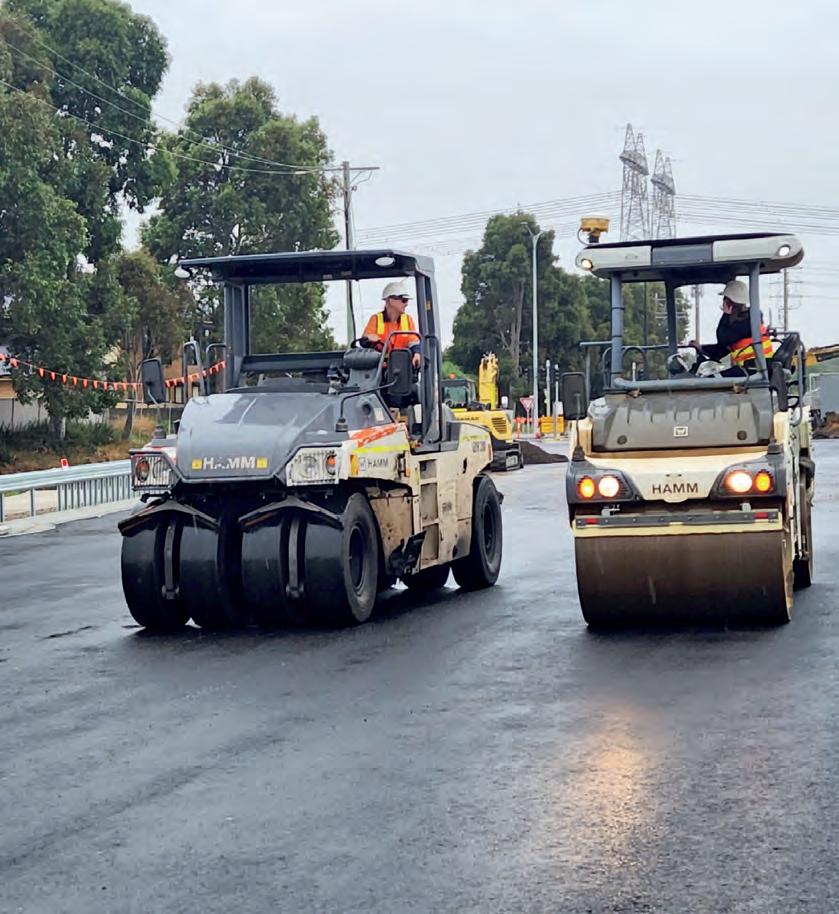
Amarapave is currently working on a number of projects across Victoria.
provide services where we put people into existing crews.
“The best way to help break down those stereotypes is to show that we’re out there doing it. That changes people’s perspective and opens up conversations around people shifting what they thought was the norm.”
Early initiatives within Amarapave’s business model included hosting monthly networking events to break down barriers of isolation which exist within the industry for non-male people.
“We’ve found that there are a lot of people that are interested in getting into the trade, but one big barrier is they don’t know where to start,” MacMahon says.
“All but one of our employees have come through our networking events.”
MacMahon says Amarapave is proud to be an entry point for non-male people
looking to enter the sector, providing pathways for people who are starting off at an entry level.
“We have people coming in with no experience in the industry, and it is hard to get your foot in the door without any experience,” they say.
“Female and non-binary people want to learn; we already feel like we have a lot more to prove in the industry because of the gender stereotypes that exist.”
Amarapave has revolutionised the asphalt pavement industry by fostering a diverse and inclusive landscape for its staff, helping to avoid the difficult conversations both MacMahon and Stubelj faced breaking into the industry.
“I felt like it was a very overwhelming experience,” MacMahon says. “On my first day my foreman told me that I belonged in the office and not in the field. It was
daunting coming in and being in that sort of environment.
“I’d love to say things improved, but they didn’t. Over time I did find people within that space that were allies and were very supportive.”
With bespoke training systems and tailored traineeships in the employees’ field of interest, Amarapave employees are provided with the same opportunity to learn and develop at a pace which is comfortable for them.
O perating for less than a year, Amarapave has been working to transform the asphalt industry across Victoria, partnering with Women in Construction and Jesuit Social Services, broadening the company’s community outreach.
Although its time in the industry has been short, Amarapave’s impact has been far reaching, developing a new generation of asphalters where diversity thrives. With a narrowed focus on purpose over profit, Amarapave reimburses money back into the development of its staff and social purpose, creating more pathway opportunities for females, non-binary


terms of gender equality, its resources reflect a shift in the way the construction
As Rio explains, the MRPV’s partnership with NAWIC has been instrumental in advancing MRPV’s gender
“Key achievements from this partnership include the development of the Roadmap Towards Gender Equity, the establishment of gender equity minimum standards and requirements, and a collective agreement on the importance of gender equity,”
“Additionally, it has promoted the inclusion of gender equity as a safety priority and encouraged collaborative efforts to build a more inclusive and supportive industry environment.”
Through the MRPV Roadmap Towards Gender Equity and the minimum standards and requirements, the State
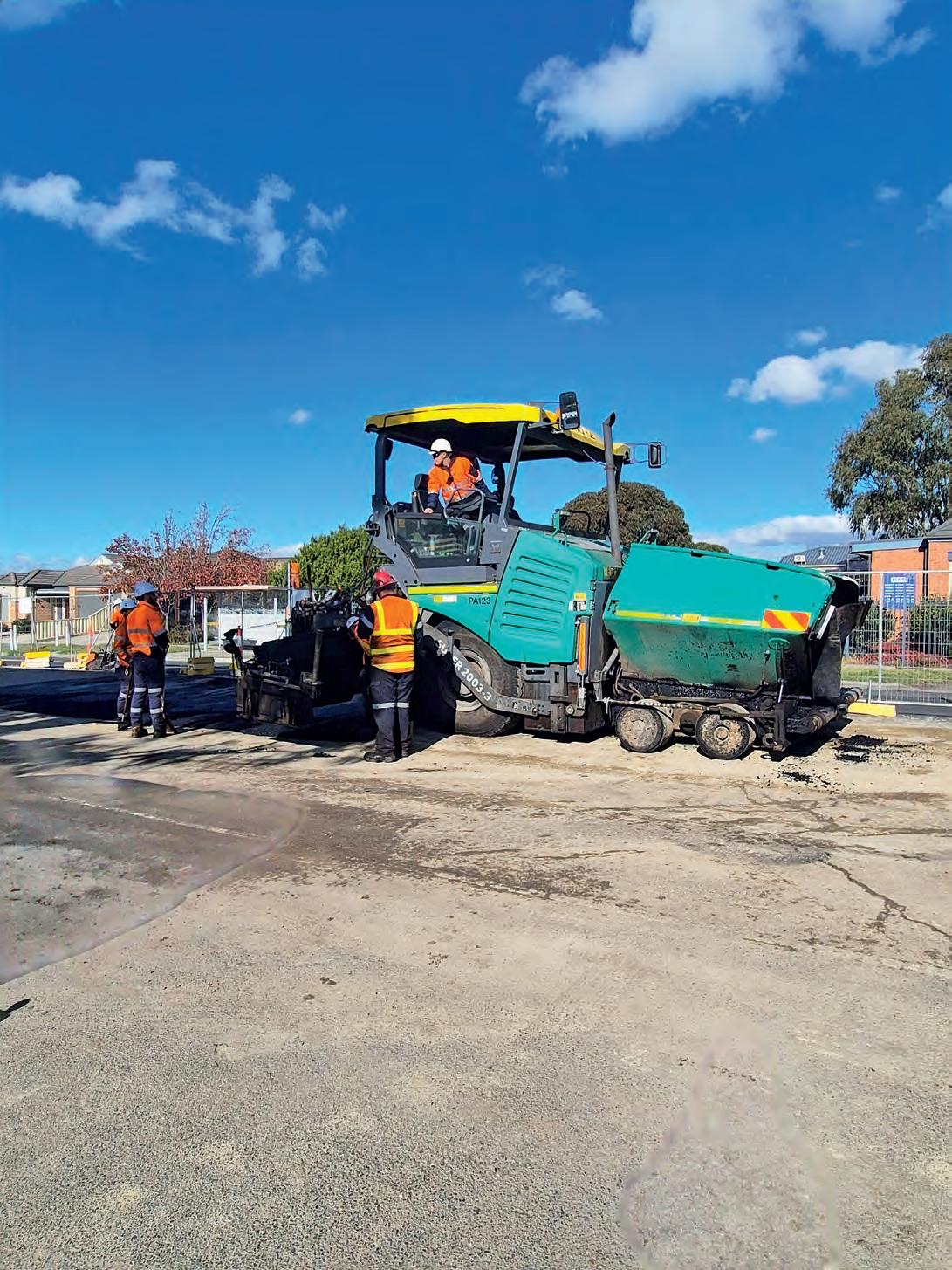

Jenika Stubelj, Amarapave Managing Director.
Ash MacMahon, Amarapave Field Director.
Amarapave is helping to develop a new generation of asphalters where diversity thrives.


BULK HANDLING EXPO

THE GATEWAY TO INNOVATION
THE NATIONAL TRANSPORT RESEARCH ORGANISATION (NTRO) HAS BEEN BUSY REIMAGINING ITS LONGSTANDING CERTIFICATION FRAMEWORK FOR INFRASTRUCTURE PRODUCTS. REPRESENTATIVES FROM THE NTRO EXPLAIN ITS ROLE AS AN IMPARTIAL BODY AND WHY SUCH A PROCESS IS ESSENTIAL FOR INNOVATION, SAFETY AND THE FUTURE OF THE SECTOR.
Differing regulations and approaches between sectors, states and nations can make product certification a difficult and at times confusing process.
After identifying and hearing the contemporary demands of the sector, the National Transport Research Organisation (NTRO) set out to establish an improved, impartial and trusted evaluation/ certification process for transport products. It’s here that NTRO Certification was born.
Described as a potential “one-stopshop” for transport product evaluations, NTRO Certification will provide procurers and users confidence in new-to-market
and innovative products. Nigel Powers
– NTRO National Leader, Structures and Certification is one of the key individuals supporting the development of NTRO Certification. He says NTRO Certification addresses the industry’s challenges towards an impartial and trusted certifier for infrastructure products.
“Before I was with the NTRO, I had a lot of proponents coming to me with all of these ‘whiz bang’ products and services, but we often didn’t have the time or the resources to do a proper assessment each time to work out if it was worth going with a new product,” he says.
“When I arrived at the NTRO and learnt a lot more about the organisation’s plans for certification it was fantastic. It made me think and wish that we had a similar process in the past. This is exactly what the sector has been looking for.”
Paul Hillier is leading the NTRO Certification program. He says it’ll help to show that products have been evaluated, tested (as required) and approved by a trusted industry body.
He adds that similar schemes overseas, for example in England and South Africa, have helped shape a methodology that’s fit-forpurpose for Australia’s infrastructure and transport sectors.
“Just like some of our international counterparts, NTRO Certification provides a logical, rigorous and robust foundation for assessing products,” Hillier says.
On top of ensuring that tested products meet the claims made for them and can stand up to the task at hand, NTRO Certification ultimately aims to reward dedicated innovators and benefit the end-user by providing confidence and

surety in new products. Powers believes NTRO Certification will help to open the door for innovative products that may not have been used previously, allowing the national transport sector to access brand new technologies, materials and components. Older products, those used overseas, or products that may not have satisfied a certification process previously, can also go through the NTRO’s formal evaluation scheme.
“In assessing these products and services we’re helping the sector to harness innovative products. It’s our goal to provide this to both the public and private sector operators so the whole industry can reap the benefits,” Powers says.
HOW DOES IT WORK?
NTRO Certification’s re-imagined methodology builds on the original Transport Infrastructure Product Evaluation Scheme (TIPES) certification introducing ‘readiness for evaluation’, risk triage and post-certification audit components.
The risk triage component is an exciting development – a potential game changer.
The risk triage methodology allocates one of four tiers to a product evaluation (Tiers 1 to 4), which then sets the intensity of, and tasks within the evaluation and an idea of the resources and the time required.
Hillier says applying the methodology can be the difference between an evaluation that could take two years and involve a formal field trial (Tier 1) and one that could take just weeks, reflecting maturity of a product and its prior usage (Tier 4).
The ‘readiness for evaluation’ approach is intertwined, with NTRO’s subject matter experts meeting with the prospective innovator to learn more about the product and any previous testing and usage.
The NTRO then carries out its evaluations through subject matter expert meetings and testing at its on-site facilities or similarly accredited laboratories, with the associated costs being covered by the prospective innovator, or through a sponsor such as a road agency or government body.

“We have our own laboratories and are always delighted to work with clients, but as long as testing is traceable to a nationally accredited laboratory,” Hillier says. “The whole process is about working with innovators, clients and end users and bringing them together in the best way possible.”

Powers says that thanks to its specialisation in transport, the NTRO is uniquely qualified to provide a wide, completely impartial, certification process.
“We’ve got people across different modes of transport, different materials and different technologies,” Powers says.
“We’ve got a great network of knowledge and experience domestically, and even internationally, that we can draw upon as part of our assessments.
“That enables us to perform best practice industry assessments.”
Another important aspect is the NTRO’s strong relationship with different states and territories, where rules and expectations around infrastructure products can differ greatly. The NTRO has taken steps, and has prior experience, in catering to the needs of a specific region.
“We’ve taken what works and are growing and building off that. We’ve also actively contributed to the National Harmonisation Working Group for product approvals, which has been led by Transport for New South Wales,” Powers says.
“The Group has established 10 core principles and a framework which recognises that ‘one size doesn’t fit all’. A rigid, single approach has been tried in the past and largely that approach hasn’t worked. Each state and territory has very different specifications and rules, but we’ve taken some meaningful steps forward through the Group, which has featured organisations from right across Australia.”
This is also far from the NTRO’s first venture into the world of certification and standards. As well as its TIPES scheme, the organisation has several solutions in this space, with its ‘best practice’ guides. These are practical explanations around the best materials, pavement design, procedures and more for sealed/unsealed roads and bridges.
The NTRO also has material guides and has been influential in the creation of select standards and requirements across states.
PEOPLE AND PROCESSES
Another interesting aspect is developing the skills and accreditation of staff through
Image: stock.adobe.com/David Parker.
NTRO Certification will provide greater accreditation to infrastructure products, helping to boost innovation and confidence across the sector.
Nigel Powers, National Leader, Structures and Certification – NTRO. Image above and below: NTRO.
Paul Hillier, Principal Professional Leader – NTRO.
NTRO Certification, which includes vastly experienced, in-house Learning Professionals.
Powers says most may think that NTRO Certification only applies to products, but the NTRO recognises that people are an equally important aspect to ensure performance and safety.
“We do have the capability to review and assess people’s competency and capability to be able to certify them for certain activities,” he says. “There’s been a lot of turnover when it comes to experienced workers across the sector. This program ensures that staff are competent. It gives the employer confidence that they’ve got the right person for the job.
“One of our key areas is certifying people for bridge inspections. We’ve got a number of states and territories that have signed up to that. Bridges can be high-risk and can deteriorate over time, so it’s crucial that we can have qualified people to pick up defects and highlight the maintenance that’s required. It’s even more important that it’s done consistently.”
Powers says the NTRO is considering expanding these staff certifications to
potentially cover rail bridges. The NTRO is also looking to offer the programs in New Zealand, where the organisation has a growing presence.
Another unique aspect of NTRO Certification is the evaluation of processes and services. Processes includes activities such as concrete and mix designs, and most recently the re-use (remanufacturing) of the batteries of electric and hybrid vehicles. Services tend to include certification of equipment calibrations and premises such as quarries. All of these can be placed under the microscope.
Powers believes that NTRO Certification will be an essential resource for years to come.
“When I think back on my early days, what excites me the most is the ability to give confidence back to designers, specifiers, procurers and contractors that what they’re using has been robustly certified. It’s giving authorities – many of which have limited resources and budgets – the opportunity and peace and mind to try new products,” he says. “It’ll help my old colleagues, it’ll help the organisations that we partner with and
most importantly, NTRO Certification will help the industry as a whole.”
Hillier says the incorporation of non-disclosure agreements and the NTRO’s experience in discreetness ensures that intellectual property (IP) is protected, in a process that aims to allow it to flourish.
“It’s important to understand that there’s flexibility. There are a range of options that we can customise around the needs of clients and innovators,” he says.
“It’s a scheme that’s robust, that we believe is durable and will lead to great outcomes, but it’s still a flexible framework. There’s a lot of great ideas out there, and some not so good, and we’ve got a perfect opportunity to allow the best ideas to come to fruition through this scheme in a timely manner.
“We want to discover the products that will lead to the best outcome for everyone and get them onto networks as soon as practicable.”
For more information on NTRO Certification, get in contact by emailing certification.product@ntro.org.au
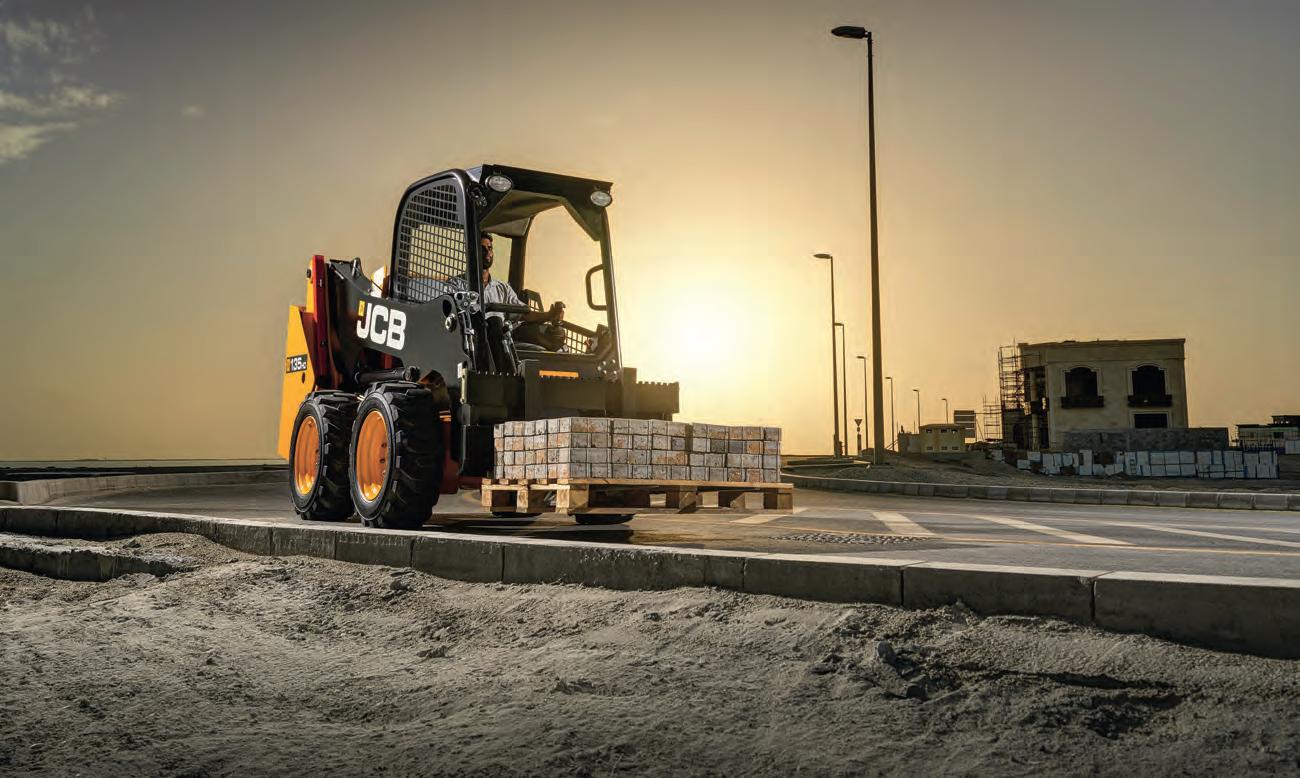
SAFEST SKID STEER on the market

Receive up to $2.5K
Safety is also a key priority and with exclusive left-hand-side entry operators can access the JCB skid steer without having to climb over large attachments or under an unsupported boom, and with a 270° field of vision the range offers up to 60% better visibility than rival machines. For the ultimate in versatile performance the JCB skid steer range offers endless possibilities. Now there’s another
Benefitting from JCB’s unique PowerBoom design, a single-sided reinforced high tensile strength steel boom that features 20% more steel than its competitors, JCB’s skid steer range is built to tackle tough jobs that require a compact machine with heavy duty features.
To find out more and take advantage of this great offer speak to your local JCB CEA dealer today!
Ph: 1300 522 232
www.jcbcea.com.au



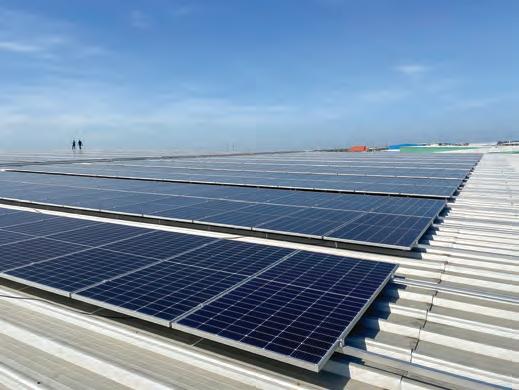



TRACKING HOLISTIC
TELETRAC NAVMAN IS ENCOURAGING A GREATER USE OF TELEMATICS TO BETTER MANAGE HEALTH AND SAFETY, LOCATION, PREVENTIVE MAINTENANCE, AND UTILISATION FOR ALL MACHINERY AND EQUIPMENT ACROSS CONSTRUCTION SITES.
For infrastructure projects of all sizes, there’s almost no greater priority than logistics.
The effective logistics of materials and equipment is a major barometer for project delivery success.
Central to the strategy of all modern construction operations, is the satisfaction of what is referred to as the four pillars. For businesses that are looking to move and progress to the next level, these pillars act as a list of essential criteria.
The four pillars include workplace health and safety, real-time location management, asset utilisation, and preventive maintenance.
Compliance and work health and safety is the most important of the key pillars.
According to Safe Work Australia, data collected in 2022 showed that 42 per cent of worksite fatalities involved vehicles, with 13 per cent being caused by moving objects.
With on-site safety still a major concern, telematics can help establish a safer working site.
Speed monitoring is just one example. Speed, both on and off site, can easily be monitored with real-time alerts of any breaches. Historical data provides insights into safety trends as issues are identified and rectified, allowing projects to demonstrate

proactive risk management and the effects on safely using telematics.
Restricted area regulation is another feature available using geofences. These are essentially digital fences designed to direct users to a location or prevent them from entering a specific location to help project and fleet managers keep heavy vehicles and plant out of restricted areas and – in the case of trucks – on approved roads.
They can also ensure that trucks don’t stage in areas that can cause potential risk to other road users and pedestrians. They are also used to issue instructions or warnings to drivers via in-cab devices, advising on speed limits and warnings if entering an exclusion zone or school zones.
Effective telematics can increase the chance of avoiding health, financial, and legal issues while also satisfying safety requirements frequently outlined during the tendering and procurement phase of projects.
UNLOCKING BENEFITS
Unlocking the aforementioned key pillars can help businesses grasp otherwise unachievable efficiencies, particularly when it comes to increased productivity.
A lack of visibility and understanding can often cause inefficiencies, at the very least, and, if left unchecked, significant cost and time blowouts.
Increased awareness of modern fleet management and telematics can highlight the importance of utilisation and provide new insights for your operation, as Teletrac Navman Solutions Specialist James French explains.
“It’s about understanding utilisation, ‘Are machines working? How many hours are they working? Where are they on the site? Location is a given with GPS, but its value should not be underestimated,” he says.
“If machinery is sitting idle on site, it costs you money. This is the key, as productivity and utilisation are often linked together.”
With the greater levels of communication and insight come more benefits from being able to adapt to challenges that regularly face construction sites, whether its energy efficiency or traffic management. Towns and cities are even benefitting from the use of telematics, not just construction sites in isolation.
Overall, the financial savings on administrative and compliance costs cannot be underestimated. Simplified workflows help to ease the burden and ensure that project managers and stakeholders can

Telematics and greater asset tracking can help to increase the safety and productivity of a construction site, on top of reducing the frequency of required asset maintenance.

instead turn their attention to more pressing issues, such as on-going construction works.
This also leads to more efficient vehicle and equipment tracking, both in terms of location and wear.
ERADICATING INEFFICIENCIES
Another key component of the four pillars is vehicle and asset maintenance. With so many moving parts spread over many locations, it can be difficult to stay on top of maintenance. Unexpected maintenance from asset downtime is an area where a project may be affected by delays caused by poor insight. Preventive maintenance is key here.
Real-time alerts based on maintenance requirements can help ensure that machines and vehicles are serviced on schedule. The use of telematics has demonstrated a reduction in unscheduled services, which generates financial savings for contractors.
Project managers can help to ensure the smooth sailing of works on site.
With real-time data around schedules and detailed information on previously completed maintenance, the business can benefit from maximum utilisation of equipment and machinery on site and reduce costs needed to hire equipment. Assets are expensive to purchase, so maximising their return on investment is important.
With all this, it can be better assured that start and finish times occur during approved times so that curfews can be set to alert if equipment is operating on sites outside of approved schedules.
Project stakeholders can also benefit from live information about driver behaviours. With a range of performance and safety metrics, the information helps to paint a picture of operational inefficiencies while decreasing the chances of assets inadvertently being damaged through live alerts.
“It’s vitally important that a contractor can make a business decision that’s based on credible data,” French says.
LOCATION, LOCATION, LOCATION
Importantly, telematics also provides pin-point clarity when it comes to realtime location management for equipment and assets.
This is particularly crucial for construction and infrastructure works over large distances, where multiple assets are interacting and shifting constantly.
Through effective location tracking, assets can be quickly located, making it easier to find equipment that is scheduled for servicing or transport to another location or job.
It doesn’t stop at location, though, as integrated technologies provide a level of information and control. For example, you know exactly where all lighting towers are and their current fuel level, regardless of whether they’re on or off. Contractors can reap the rewards, too. Through greater tracking and utilisation, project managers can better plan for projects in metro areas, leading to reduced impacts on the community.
“If you’re getting complaints about truck

movements, you can quickly verify if trucks have or haven’t been on location, and make sure that they go to the correct gates in future to minimise impact. If you’ve got telematics, then you’ve got access to the truth,” French says. “When we’re talking about delivering construction projects, there’s a long to-do list. That’s why Teletrac Navman has asset tracking solutions and the hardware to meet project goals.
“Telematics in infrastructure can be likened to air traffic control, the systems give visibility to all inbound vehicles, including those on site and those leaving site, with an ability to auto allocate within software. Incoming and outgoing vehicles can be assigned drop off and pick up locations automatically, ensuring that congestion on and around the job site is minimal, allowing staff to concentrate on the job rather than worrying about traffic.”
Telematics can be an effective tool for infrastructure sites of all sizes.
Image:
Image: Xxxxxx
The use of telematics can help to reduce the impacts of construction on the local community, through greater tracking and asset co-ordination.
NO-DIG DOWN UNDER







TOGETHER LEADING INDUSTRY
WIRTGEN AND STABILISED PAVEMENTS AUSTRALIA HAVE FORMED A STRONG BOND OVER TWO DECADES, WITH BOTH BENEFITTING FROM A LOYAL PARTNERSHIP. ROADS & INFRASTRUCTURE SPEAKS TO REPRESENTATIVES FROM BOTH COMPANIES TO HEAR HOW THE PARTNERSHIP HAS GONE FROM STRENGTH TO STRENGTH.
Both Wirtgen and Stabilised Pavements of Australia (SPA) have more in common than you might think.
The former – one of the world’s premier road construction machinery manufacturers – and the latter – a leading provider of sustainable and cost-effective pavement solutions – have worked hand in hand for close to two decades.
This relationship goes far beyond just machinery. Their history extends back to 1997, when both companies were much smaller than their respective industrywide capabilities and solutions today.
Before elevating themselves to be among the leaders in their given industries, a fortuitous encounter gave birth to a lasting partnership. As Jason Parrish, National Plant Manager – SPA explains.
“Back in the day, Wirtgen was a relative
newcomer to the sector in this space, they’d been out for 10 to 15 years and the reputation around their machinery was growing,” he says.
“They were slowly starting to get the mantle of the market leader; we could see more and more of their profilers and cold recyclers around. Immediately it was the German technology that set them apart from the rest.”
Brett Ferris, Product Support Manager – Wirtgen says his earliest memories of working with SPA extend back to 2011.
By that time Wirtgen was already established as one of the biggest brands in the sector.
As he recalls, SPA’s willingness to embrace brand new technologies was evident right from his first encounter.
“Wirtgen has always been the market leader for a reason. Our technology is far
and away advanced compared to what else is on offer in the market,” Ferris says.
“SPA are generally the first ones to take on new technology, no matter what it is. It’s not a case of just dropping off the machine and saying, ‘good luck’. We’ve always wanted to work together, to help push things further in our partnership. It’s not just about the machine itself.”
Ferris says the long-established relationship allows for honesty and accountability, allowing both sides to engage in beneficial discussions to further improve the Wirtgen product.
“If there’s a hiccup or something hasn’t gone smoothly, we always work through that together. We’re both really familiar with how each business operates,” he says.
“At the end of the day, we always want to provide what’s best for the customer. We’re always trying to push our products

Images:
Wirtgen.
Wirtgen machinery benefits from European ingenuity, along with a design that’s perfectly suited to Australian conditions.
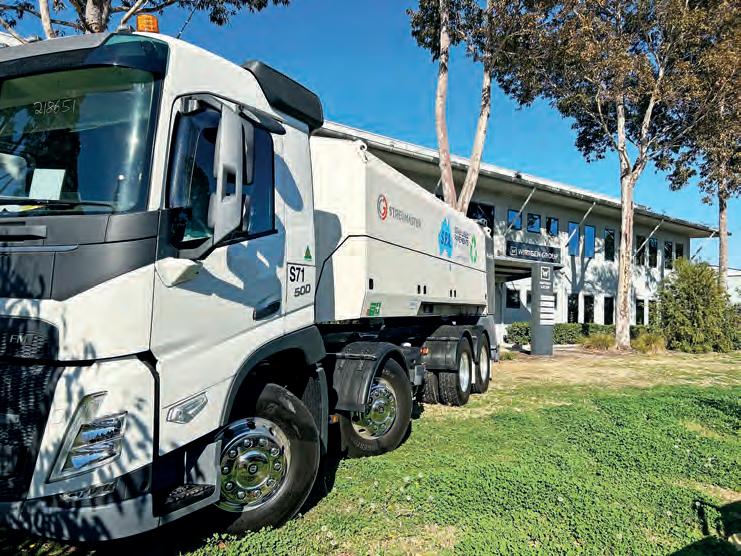

further and our customer relationships play a big part in that. It’s dynamic and always changing, but we want what’s best for everybody.”
SPA’s current fleet of 45 units is almost exclusively represented by Wirtgen machinery, a testament to the on-going success of the partnership.
SPA has also been able to run its Wirtgen units for a considerable amount of time, thanks to the robustness of the equipment and the support provided.
So much so, that SPA still has a unit from 2004 in operation.
“Our purchasing these days is almost always leaning towards Wirtgen, as they’re

the leader in the market, in my opinion,” Parrish says.
“Operationally, the maintenance, the support and the whole of life cost are all reasons as to why we keep going back.”
While SPA conducts its own maintenance throughout its vast network of workshops around the country, the company still relies on Wirtgen from time to time, especially when it comes to spare parts.
“A unique aspect of SPA is the remoteness of some of their projects,” Ferris says. “From a Wirtgen perspective, we do all we can to make sure that they can keep running, whether that’s having a long phone call, driving out or even flying out.
“It can be a challenge but it’s something that we’re more than happy to work through.”
For further assistance, Wirtgen can liaise with local service managers to ensure that customers can get their machinery up and running as soon as possible.
“That relationship and trust has only grown. We’ve both moved past traditional thinking to make sure that they’re efficient and productive with each of our products. And they trust us to show them how it’s done, if need be,” Ferris says.
ONWARDS AND UPWARDS
Both companies are eyeing further growth, with SPA already ordering additional units, including brand new Generation-Two Streumaster spreaders, along with Wirtgen’s W 380 CR Recycler.
The second-generation spreaders take
what was one of the most advanced machines in the market and elevates it to a whole other level altogether.
Key developments in faster filling and another step change in accuracy means significant savings for users, while a lower centre of gravity through the unit’s chain path design helps to improve safety and reliability. Operator comfort was also placed very high on the priority list for the Streumaster, with a new multifunctional control panel bringing together all control elements in one single unit.
This provides an ideal overview of all machine functions at all times and offers a customisable user interface.
Ingenuity also ensures that operators can benefit from correct and precise discharging of their given binder agent, with said spreading performance also able to be tracked to allow for in-depth analysis and ultimately, improved performance.
These units form part of SPA’s commitment to recycling, with the organisation taking a leading position to encourage greater road rehabilitation and pavement recycling methods.
SPA has experience completing a variety of road construction projects, having worked with state road authorities, local government, civil construction companies and more. It’s also experienced in being the voice for the pavement sector, helping to represent and advocate for improved outcomes.
“With their equipment we can cut down on the number of graders and rollers, which means it’s not only safer, but there’s far less engine emissions and impact on the environment,” Parrish says. “We’re not getting rid of excess material either, it’s all staying on site. Between ourselves and Wirtgen, we can have much greener outcomes.
“With Wirtgen’s new Streumaster spreader technology you can select from three different spread rates coming out of the back of the truck at the same time. It’s features like that which are really going to help us out.”
Wirtgen shares the same views when it comes to sustainability.
“They’re always the first to market and are helping to push the sector to do things differently,” Ferris says.
“Pavement and cold recycling are a big part of our business, which is why we’re improving our machinery to reach greater sustainability outcomes.”
Such is the popularity amongst the SPA team, they’ve ordered an additional Streumaster Generation Two spreader.
The relationship between Wirtgen and SPA is getting stronger day by day.

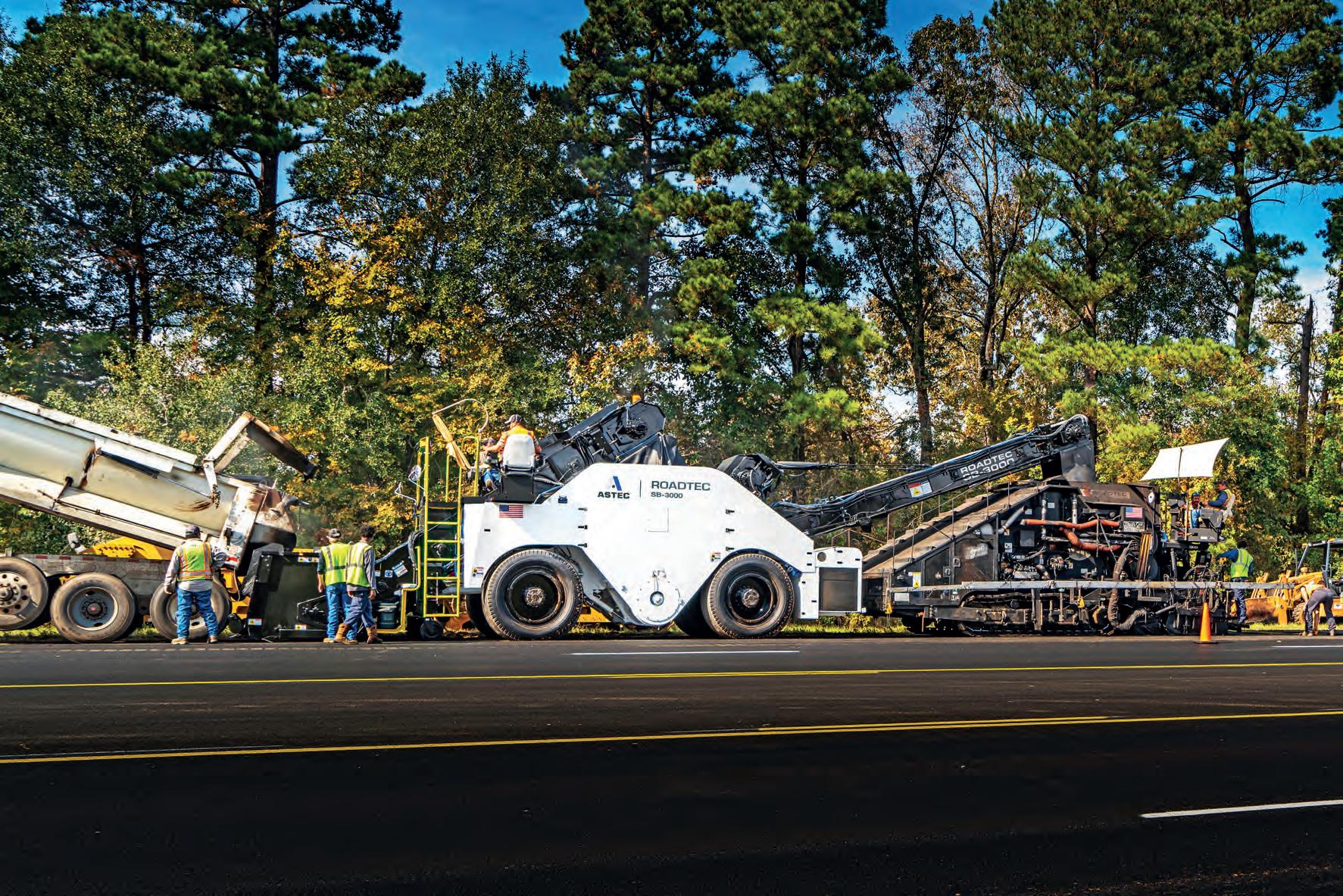
ASTEC: FROM CREATOR TO PIONEER
THE SB-3000E IS AMONG THE LATEST IN ASTEC INDUSTRIES’ SHUTTLE BUGGY AND MATERIAL TRANSFER VEHICLE RANGE. HOW DOES THE COMPANY CONTINUALLY INNOVATE IN A SPACE IT’S RULED FOR MORE THAN 40 YEARS? ASTEC’S GARRY VAN DEN BELD AND JORGE BOIL EXPLAIN.
The asphalt sector has one big reason to thank Astec Industries.
The machinery manufacturer is widely heralded as the creator of the shuttle buggy, an essential modern requirement for successfully carrying out asphalt works.
You’d have to go back to 1987 to learn more about Astec’s (and the sector’s) first ever shuttle buggy.
Clearly a lot of things have changed since that time, but a consistent factor has been the pioneers at Astec continuously improving the shuttle buggy concept year after year.
Years of innovation, development and testing in the field has allowed Astec to maintain its foothold as one of the leaders in the material transfer vehicle (MTV) space. This reputation, along with the latest in technological features, is increasingly leading to the participation of Astec machinery in major infrastructure works.
In order to greater support Tier 1 and Tier 2 operators, Astec set out to go bigger and better with its shuttle buggy design. The result is an MTV that gives operators greater capacity and control.
As Garry van den Beld, National Account Manager, Mobile Asphalt – Astec Industries explains.
“A big reason why we’re seeing such high interest in the SB-3000e is the greater capacity,” van den Beld says.
“Companies are looking at their pipeline and seeing a need for larger machinery to tackle large infrastructure projects. That’s why this model is well suited for their current and future needs.”
The SB-3000e has a 25-tonne storage capacity, supported by a Cummins QSB 6.7 engine capable of delivering 310 horsepower at 2000 revs per minute.
“Having a tier four, stage five engine can give operators confidence going forward that they can satisfy engine regulations if there’s any changes in Australia in
Astec Industries is the proud creator of the shuttle buggy/material transfer vehicle design, which is now popular across the globe.
Images: Astec.
the near future,” van den Beld says. “That engine is the standard option for this model.”

When it comes to control, the SB3000e supports four different steering modes that can be changed on the fly. These modes are crab, co-ordinated, rear only and front only.
The machine’s lower profile and lowprofile tyres provide greater stability and easier transportation from site to site. While four-wheel steering aids trailer loading and unloading, a shipping height of 343 centimetres facilitates faster and cheaper transport.
The SB-3000e is also capable of manoeuvring through tight turns and intersections thanks to its compact design, with a turning radius of just 3.43 metres in co-ordinated mode.
Its efficiency in movement is matched only by the SB-3000e’s potential in material transfer.
As van den Beld adds,“The SB-2000 is a great model; it has a capacity of 15 tonnes. That means that you’ve got to use more trucks to keep feeding it on site,” he says. “Whereas the SB-3000e is a lot bigger, so there’s no need to use as many trucks, which leads to less truck movement around the site and less impacts on the local community.
“WE WERE THE CREATORS, SO WE’VE BEEN THERE FROM THE VERY BEGINNING. WE’VE BEEN MAKING THESE FOR SUCH A LONG TIME, SO WE KNOW WHAT’S REQUIRED TO GET THE VERY BEST OUT OF THESE MACHINES.”
“It also means you can save big-time on costs, while also reducing your overall carbon footprint. That’s why, for larger projects, the SB-3000e is better suited.”
The lower profile design helps to increase visibility, and therefore safety, around the machine for both the operator and ground crews. Users can clearly see the front and the auger box during operation thanks to an unobstructed view of the work area.
Similarly, a low-profile design is a big plus for maintenance, with the SB-3000e giving crews the chance to conduct engine and select component inspections easily thanks to ground level access. Large rear doors provide access to the engine as well as hydraulic pumps. Easy-to-access panels also provide convenient storage where needed.
The spacious operator platform can be accessed easily and safely thanks to a dual function ladder, allowing the operator station to be accessed from either side. It also acts as a bridge across the machine, meaning crews can cross the roadway without having to move between different machines. There’s also an option for additional lighting to
increase the safety of night works.
“The performance, reliability and support that we can provide is what separates us and the SB-3000e in the market,” van den Beld says. “That’s been reflected in the market’s interest. Feedback and demand have been excellent here and overseas.”
To ensure high quality mixing and blending, Astec has incorporated triple pitch augers for greater consistency, helping to reduce the chances of thermal and material segregation commonly caused by single pitch augers.
Jorge Boil, Business Line Manager, Infrastructure – Astec Industries attributes the on-going success of the SB-3000e to the company’s shuttle buggy “know-how”.
“We were the creators, so we’ve been there from the very beginning. We’ve been making these for such a long time, so we know what’s required to get the very best out of these machines,” he says.
This also aids the challenge of innovating year in and year out, with Astec embracing the pressure that comes with maintaining its reputation for quality and reliability.
“In many ways the principles remain the same,” Boil says. “We’ve worked to add a lot of benefits on the features side. It’s about incremental improvements that can make a big difference in the grand scheme of things.
“We know that the SB-3000e will serve us and the market well for years to come.”
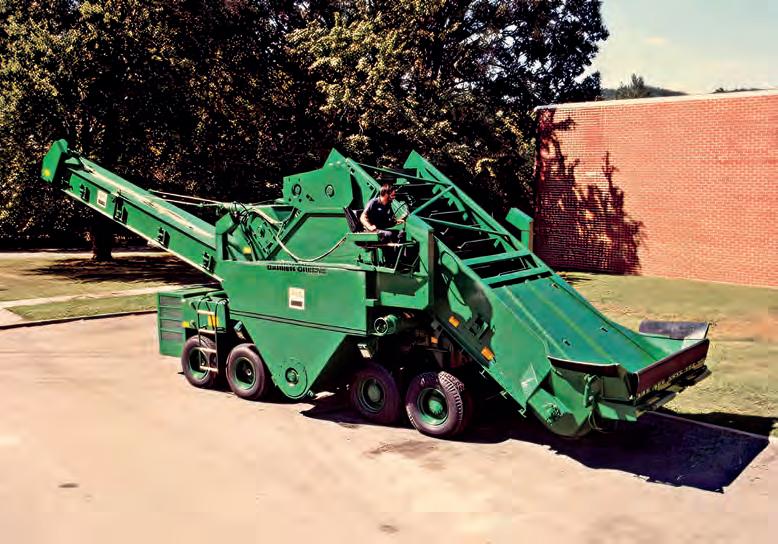
has come a long way throughout the past few decades.
The shuttle buggy design
A municipal works, civil and commercial construction event.
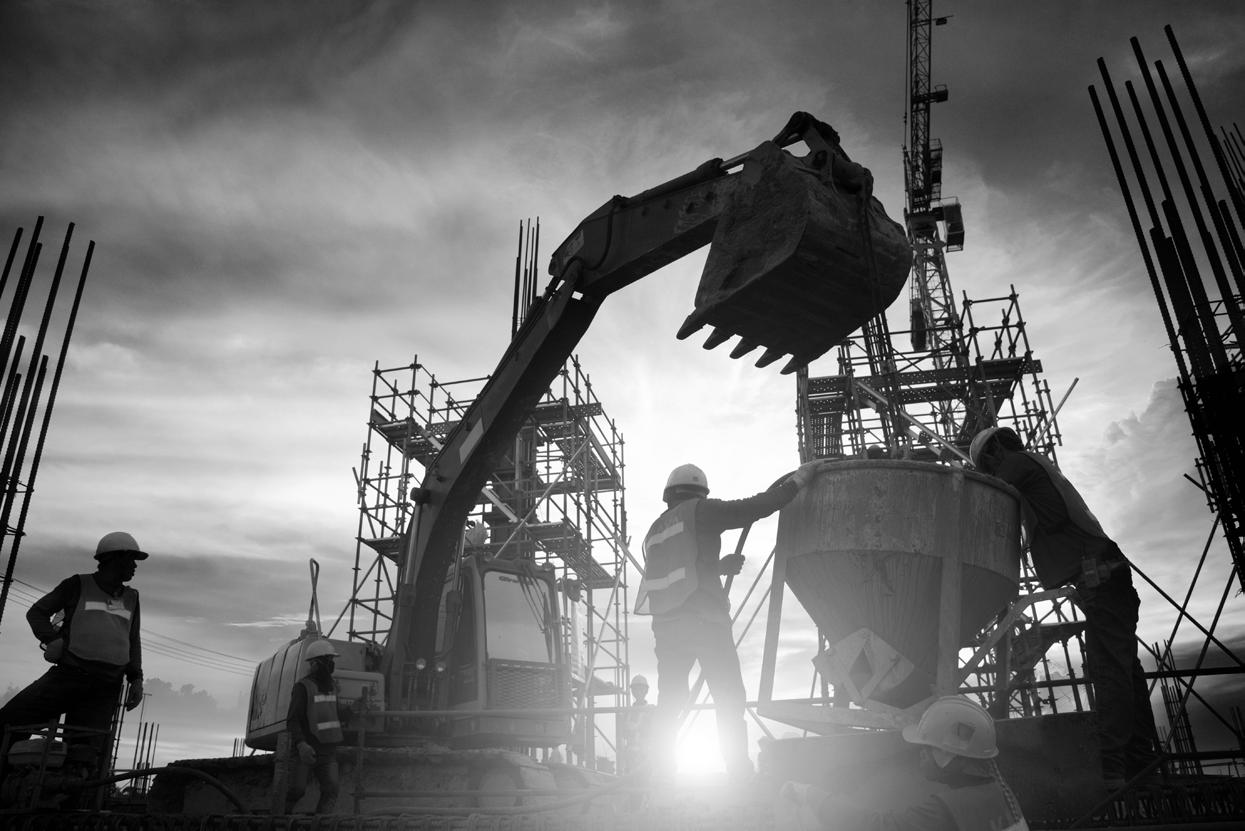
17-18 September 2025,
In September 2025, a new event will be landing at the Melbourne Convention and Exhibition Centre. Converge will bring together leading decision makers in the Municipal Works, Civil and Commercial Construction space, to share the tools, ideas and technologies that are shaping these sectors.
MEETS THE EYE MORE THAN
MATTHEWS
BROTHERS ENGINEERING (MBE) HAS ESTABLISHED A REPUTATION FOR DESIGNING AND MANUFACTURING ROBUST ROAD CONSTRUCTION EQUIPMENT. THE MBE TEAM TAKES ROADS & INFRASTRUCTURE BEHIND THE SCENES TO LEARN MORE ABOUT ITS HIGHLY REFINED PRODUCTION PROCESS.
How do you reinvigorate and innovate consistently? It’s a question that the team at MBE has been asking itself for decades.
For the specialised road construction equipment manufacturer, it’s the many fine details that make up a sprayer, spreader, or tanker where continued improvements can be made.
MBE has been manufacturing specialised bitumen handling equipment since the 1970s, designing and producing such machines in-house, built for Australian conditions and applications.
Sally Rolfe, MBE Operations Manager says the company has polished its equipment and methods over time, resulting in a production process that satisfies the varying needs and desires of its loyal customers.
“Being a part of a small business, I wear many different hats. I do all of the new sales, help with fleet management, conduct operations management, as well as finance management,” she says.
“Through my work with Paul (Matthews) I was introduced to a lot of our new or existing clients, so I became his support person in that space. When his role eventually changed, I was primed and ready to step up.”
Rolfe’s role is highly dynamic. She’s also at the very top of the traditional production process, starting and maintaining the initial conversation with committed and prospective clients.
A unique aspect of Matthews Brothers Engineering’s machinery and equipment is the adaptability, through customisation. With bountiful options available, Rolfe works closely with the customer to develop a design that can satisfy their requirements.
As she explains, a number of factors dictate the final design.
“Those early conversations are very
much around ‘how do you use it? What environment do you work in?’ It’s about getting an understanding of how and where they operate their machinery,” Rolfe says.
“There are options that you need if you’re working in the middle of Australia, but if you’re working in metropolitan Melbourne, you might need something completely different. It’s important to reach that understanding before moving on to the design.”
MBE has placed a particular emphasis on improving this step of the process, aiming to simplify the many options for customers, ensuring that they’re not overwhelmed. Rolfe also utilises the knowledge of
different MBE departments to mould the initial concept.
“A lot has changed in the way that we present information,” she says. “We want to make sure that the customer can have a clearer understanding of the options that we offer. We’re massive on constant refinement, looking at improvements internally around how we can better articulate our offerings at a price that’s as cost effective as possible for the customer.”
Once clients under Rolfe’s guidance have selected their ideal setup, she’s tasked with developing a build list that can then be passed on to MBE’s design and engineering team.
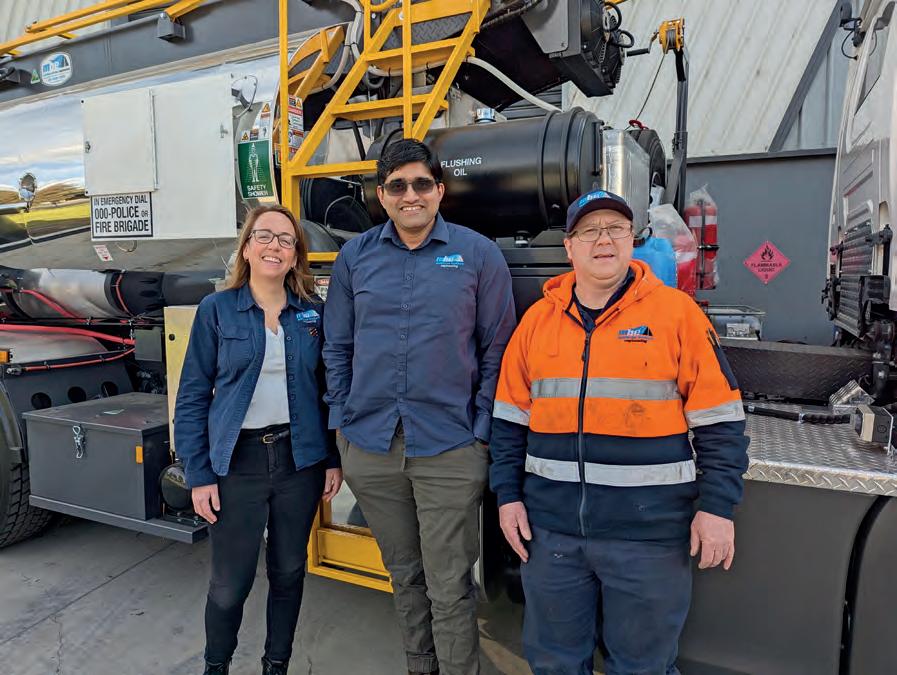
Sally Rolfe – Operations Manager, Deepak Nair – Design Engineer and Marty Barker – Production Supervisor.
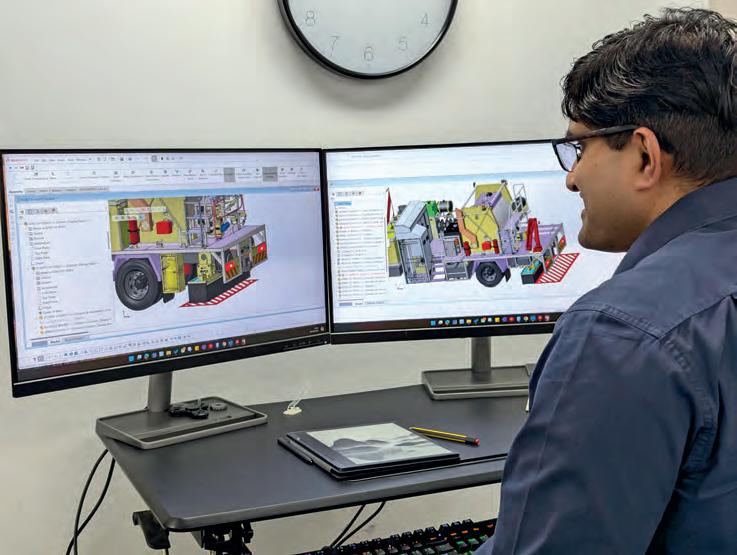
Every stage of the design development process can be carried out by MBE’s team, who are equipped with the latest modern design capabilities, as well as decades of industry experience between them.
This also applies to equipment requirements that may fall outside of MBE’s existing product range.
“We’ve also done a lot of work internally to make sure there’s clear build lists and communication around what the client wants, that way you’re not just looking at 30 boxes that need to be ticked on a piece of paper,” Rolfe says. “Once the build list is handed over, our crew can ask questions and reconfirm a few details if need be.”
MULTI-DISCIPLINED DESIGN
A big part of MBE’s manufacturing process is its pre-production design review. This step comprises the development of a final design using three-dimensional CAD software.
This is especially important in producing detailed fabrication, machining, and general arrangement drawings, as well as laser cutting profiles.
Deepak Nair is MBE’s Design Engineer and is responsible for working through the buildspecific features, concentrating on aspects of detailed design.
As Nair explains, this stage is important for two key reasons. The first being clear communication to the production team on what needs to go where. The second, is to provide a clear three-dimensional concept for clients to review, as well as a detailed file to keep for future reference.
Throughout the detailed design stage, Nair consults with other departments to ensure
that all aspects of the multi-disciplined production process are considered.
“I begin to put together the unit in a virtual three-dimensional world using a software called SolidWorks. It’s very important that I can discuss the design with other team members, as there’s a number of things that we can do in the 3D world that can’t be reproduced in the real world,” he says.
“There are people that have been working here and building the same units for 30 years, so there’s so much knowledge that I can benefit from. There’s always a better way of doing things.”
Once the three-dimensional model is complete, Nair and his team begin the process of completing part drawings,

then finalised, before everything arrives at the workshop.
Nair says the dynamic nature of his role, as well as the team spirit, are big reasons why he enjoys his role at MBE.
“Whenever I look for a role, I look for three things. The first is the opportunity to learn, the second is the opportunity to contribute and the third is the excitement and doing something different on a daily basis,” he says.
“The business is 100 years old, so there’s
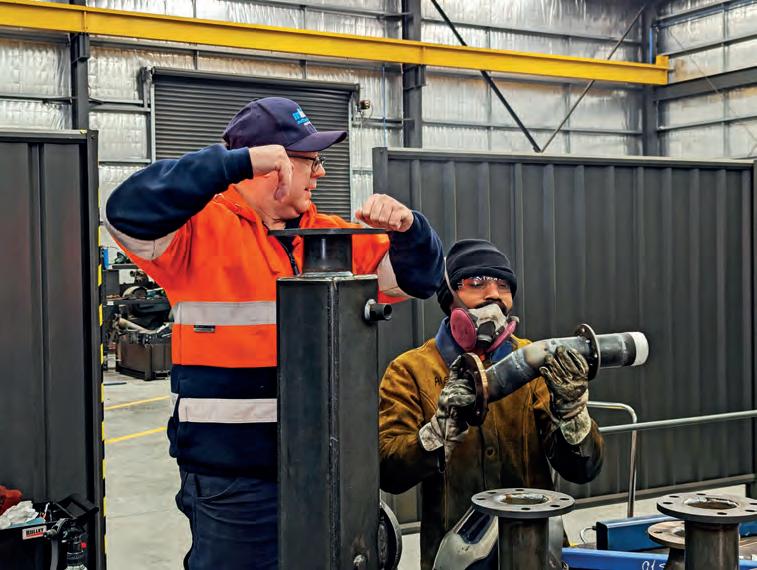
The company utilises the latest equipment and technology to deliver desirable outcomes for its clients.
The team at Matthews Brothers Engineering has refined its manufacturing process over time.
Matthews Brothers Engineering’s units have gained popularity due to their renowned quality and robustness.

“WE’RE CONSTANTLY LEARNING, AND IT’S FAST-PACED AROUND THE SHOP. THERE’S A REAL FLOW NOW FROM DESIGN TO THE WORKSHOP, WHICH ONLY IMPROVES THE OUTCOME OF THE PRODUCT IN THE END.”
always something new happening. I get a great sense of satisfaction and pride as well that I’m helping the company to achieve its goals.”
LAST CHECKS
Once the production drawing is finalised, Martin (Marty) Barker, MBE Production Supervisor is tasked with overseeing the final build for the designed MBE unit.
Barker is one of MBE’s most experienced team members, having been at the business for just shy of 25 years. If a client has ever operated an MBE sprayer, there’s a good chance that Barker has had a hand in its production.
“Because I’ve been around for so long, quite often people will come to hear what I think about a particular design or part,” he says. “They really value my input and it’s a proper team effort.”
Barker’s wealth of experience makes him ideally placed to support members of the production team throughout the build, acting as a conduit between production and engineering to ensure a seamless flow of information.
“It’s my role to check in with the team on
the floor to see how they’re tracking and if there’s any potential hold-ups to their progress,” Barker says. “I also assist if there’s any drawing or design issues. Sometimes it’s about finding a better way or altering the build, that’s where we’ll revisit and share with the design and engineering team.”
Throughout the build process, Barker and Rolfe will regularly touch base, allowing clients to be frequently updated with the build. Whether it’s via telephone conversations, emails, or by sharing images of the build as it progresses, these product updates are usually well-received by the client.
On top of seeing the end product fully designed and built, Barker says another aspect that fills him with a sense of pride and purpose is the knowledge exchange between generations.
“Being able to teach something new to one of our younger team members is a great part of the job, one of the aspects that I enjoy the most,” he says. “I can talk about a lot of this stuff for hours and hours!”
Barker says it’s a highly dynamic environment, with each build presenting its own set of opportunities and challenges.
Rolfe agrees, saying the construction of each unit takes much more than just the right tools and teamwork.
“Our production team aren’t just production line workers, they are much more,” she says. “If we’ve got a new design or concept, it’s up to them to think outside of the box. They’re very skilled in strategising to make sure that we can turn a drawing into reality.
“We’re constantly learning, and it’s fastpaced around the shop. There’s a real flow now from design to the workshop, which only improves the outcome of the product in the end.”
Rolfe says that MBE is still fine-tuning and improving its production process, with it being far from a perfect picture. As she explains, the progress already made is a positive indication of what’s to come.
“The positive feedback that comes through is essentially around our technical support, our training capabilities and how intuitive our trucks are,” she says.
“The Matthews Brothers Engineering brand just shines through. A lot of our customers aren’t novice operators, they’re people who have been in the sector for a number of years. They’ve been in the game for a long time, and they know their stuff.
“They all rave about Matthews Brothers Engineering trucks. That feedback is as good as you’ll get.”















SMART PLANER THE CAT ® NEXT-GEN
PERSEVERANCE, DEDICATION, AND A COMMITMENT TO QUALITY ARE ALL APT DESCRIPTORS FOR MATT WHITLEAH’S SUCCESS AS THE OWNER OF WHITLEAH ASPHALT. CAT® MACHINERY SYSTEMS HAVE PLAYED A KEY ROLE IN THIS SUCCESS, AS HE EXPLAINS.
Many would have thought the COVID pandemic would scare off potential new business ventures, but in December 2021 with only $1000 to start with, Matt Whitleah made the leap to start a company.
Two and a half years on, Whitleah Asphalt has become a highly successful, privatelyowned asphalt company on the central coast and Hunter region of New South Wales.
The asphalt industry has been a part of Whitleah’s life since the age of 14. With 19 years’ experience, he had clear goals for his company.
“When I began the company, I had some firm aims. I wanted to do better quality work, have a good work life balance, and wanted to ensure my employees enjoyed a healthy work culture,” he says. “Undoubtedly, it was a daunting experience and very scary.
But we had a clear strategy: we launched a marketing campaign and made sure every job we did was of the best possible quality, and we didn’t muck around.”
Starting with the one machine, the company has now expanded to include seven machines, including trucks and pavers, with 12 employees.
For Whitleah, it was clear that to meet his goals of quality work he needed the right machinery, that’s why he turned to Caterpillar.
Whitleah’s current fleet includes three Cat® machines: an AP300 Paver, a CB2.7 Utility Compactor, and a 279D3 Compact Track Loader.
And one particular attachment is proving to be a big benefit in helping the company’s roadworks: a Cat PC306 SMART planer with an integrated water tank.
CAT PC306 COLD PLANER
Designed for small paving jobs in residential and commercial applications, the PC306 is primarily used to restore asphalt and concrete surfaces. It’s ideal for milling

Whitleah Asphalt is the proud user of the latest in Caterpillar machinery.
Images: Cat.

imperfections prior to resurfacing, correcting deteriorated pavement, as well as removing traffic-lane stripes and jobs where the use of dedicated planers is limited.
“A self-levelling design automatically levels the attachment for us when it’s placed on the ground, giving consistent depth control without our operator making adjustments and offering excellent spoil retention,” Whitleah says.
“The two wear-resistant skid plates always remain parallel to the ground for strong stability while operating.
“A hydraulic side shift allows planing close to curbs, walls and obstructions, while a hydraulically controlled, independent left and right depth control allows maximum drum depths to be adjusted independently on each skid.”
The PC306 has been built with simple operating in mind with the gauges easily viewable from the cab. The Max Pro pressure gauge provides operator feedback to adjust speed for maximum productivity in changing material loads, and a separate gauge – also visible from the cab – displays planer performance in real-time conditions.
A direct-drive system features a hydraulic radial-piston motor to ensure maximum cutting rate and drum torque for optimum production performance and efficiency, while a float setting enables planers to follow the contour of the surface.
Spring tilt and hydraulic tilt enable the planers to oscillate for angled cuts, and all-purpose conical bits come as standard.
Optional concrete bits, heavy-duty concrete bits, and heavy-duty asphalt bits are also available.
Caterpillar’s fast-cut asphalt drums require less power for cutting due to increased spacing between cutting lines. The drums improve productivity in asphalt applications, and are now standard on all models, while multi-purpose and optional-width drums are also available.
Safety is a key feature on the machine with serrated steps allowing for safe and easy access in and out of the cab, and a new centre step enabling even easier access and shorter step lengths for the operator.
A coupler frame-mounted water tank with a 160-litre capacity and a tank-level sight gauge can be combined with a cab-mounted water tank for additional capacity and run time – a sprinkler kit is included when ordered with a water tank installed.
Whitleah has been impressed by the water tank being built into the cold planer rather than on the roof. It saves both time and effort, meaning less hazardous lifting and climbing for staff.
“It eliminates a lot of risk when filling the water tank, which needs to be done a couple of times a day,” he says.
“We use the skid steer with this attachment every day of the week. It speeds up our asphalt work and keeps our crews happy.”
CAT SMART CREEP MODE
Another exciting feature of the planer is the Cat SMART Creep mode.
“It lets our inexperienced operators cut professional lines and is helping us particularly during challenging workforce shortages. The guys don’t have to be topnotch, gun operators to be able to cut like a pro,” Whitleah says.
WesTrac New South Wales Attachment Product Specialist Nina Zeidan says creep control has been a regular feature of Cat Cold Planers for many years. She adds that the creep speed control allows the operators to better match the speed of the machine to the optimal level of the attachment.


Operators can have full control over their machinery thanks to an intuitive user interface.
The Cat PC306 Cold Planer with integrated Water Tank, is helping Whitleah Asphalt to deliver desirable project outcomes for its growing clientele.

“It allows the driver to operate the attachments smoothly without stops, starts or strain on the operator using the joystick on uneven ground,” she says.
“This enables the tool to complete the pass without stalling or creating divots. It also helps when sweeping carparks or raking driveways with a power box rake.
“Allowing the operator to just be required to steer while creep control is keeping the speed steady means a smooth surface in one pass, while cutting down on fatigue for the operator.”
Zeidan says the creep control has been a fantastic tool, but Caterpillar has taken it to the next level with SMART creep. The valving software can monitor the pressure of the drum, giving great control.
“It’s a dynamic drive control system that
works in conjunction with the initial creep speed setting. SMART Creep senses load on the attachment being operated and can automatically adjust drive command to keep the attachment running at the most productive speed,” she says.
“This helps reduce the likelihood of stalling the attachment. If the attachment does stall, the auto reverse portion of SMART Creep can reverse the machine travel to clear the stall, then move the machine forward to continue cutting.”
Cat Cold Planers can be used on the basic standard flow that’s utilised by Cat 216 Skid Steers all the way up to the 299 XE models, as well as the 906 – 908 Compact Wheel Loaders. Caterpillar also has cold planers to suit 305 to 310 Excavators or Backhoes.
The most popular cold planers were the
Cat PC305 (450 millimetre wide) and PC306 (600 millimetre wide) models.
To top it all off, Cat Cold Planers are covered by a two-year parts and labour warranty and are serviced by WesTrac workshops and field services throughout New South Wales.
WesTrac also has a large range of parts on hand, as well as being able to source from genuine Cat part distribution warehouses nationally and internationally.
This focus on using quality machines from Caterpillar has been beneficial for Whitleah and the team. It has allowed them to complete a range of projects including asphalt resurfacing, road construction and maintenance, footpaths, profiling, in-situ stabilisation, driveways, carparks, and sports courts.
Cat Cold Planers and other hydromechanical attachments come with two years factory backed warranty.
AFPA: A PEEK INTO THE FUTURE
THE AUSTRALIAN FLEXIBLE PAVEMENT ASSOCIATION (AFPA) RECENTLY HOSTED THE ANNUAL TRANSPORT FOR NSW BUDGET FORWARD WORKS AND MAINTENANCE PROGRAM INDUSTRY EVENT.
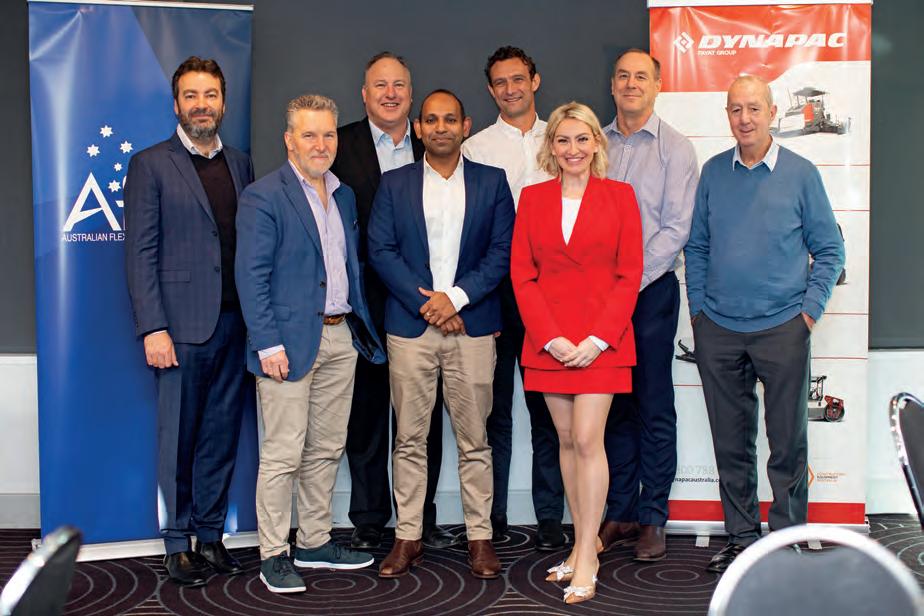
On Thursday 11 July, attendees gathered in Bicentennial Park Sydney, to gain an in-depth industry-specific understanding of the New South Wales Government’s commitment to the forward works program for the 2024-25 financial year. The briefing was delivered by three keynote speakers, including Tom Grosskopf, Executive Director Network and Assets, Regional and Outer Metropolitan Division – Transport for
Grosskopf was joined by his colleagues John Soars, Director Maintenance and Delivery, Regional and Outer Metropolitan Division NSW Government and Brett Butcher, Director Regional Assets, Regional and Outer Metropolitan Division,


Optimism is still strong throughout the sector in New South Wales, despite ongoing challenges around personnel and materials.
AfPA’s NSW/ACT Branch, alongside representatives from Transport for NSW Executive and sponsors CEA at the NSW Budget 2024-25 Forward Works and Maintenance Program event.
Images:
AfPA.

in optimal condition by identifying and addressing the most critical maintenance needs; prioritised on likelihood of failure and impact on safety and service level.
A key driver for the NSW Government is lifting performance of the road network to meet challenges, which Grosskopf says includes safety, productivity and sustainability outcomes.
“We want to attract and retain talent, build career paths and supply chains, on top of moving closer towards sustainability through net zero, materials technology and a more circular economy,” Grosskopf says.
“These are all key drivers for us, and the way to solve those problems is through stability in our sector so that investment can be made.
“We are working hard to build a procurement environment that matches the current investment environment.”
According to NSW Government, the 2024-25 budget will deliver a record investment in roads across Western Sydney.
The Budget allocated $1 billion for upgraded roads across the state, bringing the total program to $5.2 billion,
including matched funding from the Federal Government.
For the maintenance of the regional road network the value of works for the year is just over $1 billion.
That comes to an estimate of 70,000 tonnes of asphalt for the northern region, 90,000 tonnes for the southern region and 45,000 tonnes for the western region.
Lise Sperling, Australian Flexible Pavement Association Executive Director
the increased accountability, transparency and probity in the forward works pipeline,” she says.
Grosskopf says the NSW Government has continued to communicate with a flexible industry which is adapting to the changing transport sector.
“We have seen a responsive industry to the challenges of the time, and I have found that to be an absolute positive,” he says.
“WE WANT TO ATTRACT AND RETAIN TALENT, BUILD CAREER PATHS AND SUPPLY CHAINS, ON TOP OF MOVING CLOSER TOWARDS N ET ZERO, LOWER CARBON AND GREATER SUSTAINABILITY.”
NSW/ACT and Head of Federal Advocacy and Government Relations, supports the NSW Government’s commitment to the greater visibility of the forward works pipeline and encourages government to invest further to address the current infrastructure backlog.
“The event has been incredibly successful – it has demonstrated the positive results and opportunities of industry and government working collaboratively. Industry strongly support
“ What we are looking to do is to build on that past success and give it greater certainty and clarity.
“We want to help make those investments in the right place, to make sure that these projects will have a longterm benefit.”
For those who missed the event, AfPA will be hosting several others this year, including its highly anticipated National Industry Awards and Gala dinner on 25 October 2024 in Adelaide.
Transparency was a big focus at the NSW Budget 2024-25 Forward Works and Maintenance Program event, with Transport for NSW shining a light on the works pipeline.
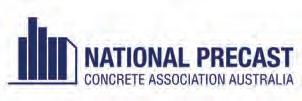
ST PETERS INTERCHANGE
THE WESTCONNEX M8 IS A PIVOTAL COMPONENT OF AUSTRALIA’S LARGEST ROAD INFRASTRUCTURE PROJECT, DESIGNED TO ALLEVIATE CONGESTION AND STREAMLINE TRAFFIC FLOW IN SOUTH-WESTERN AND SOUTHERN SYDNEY.
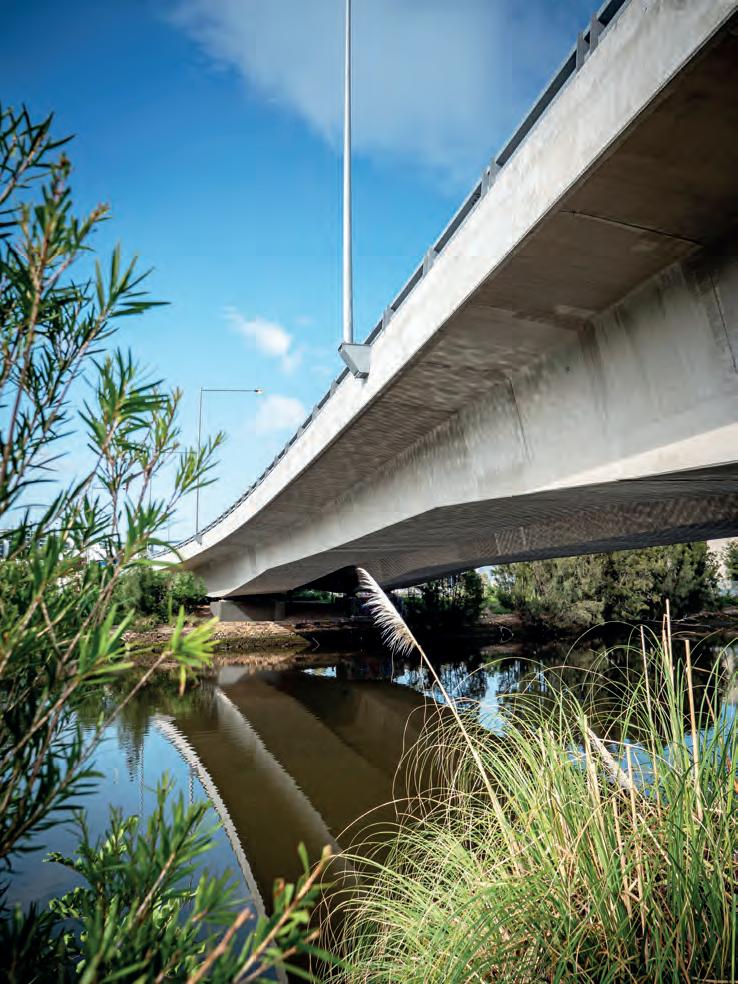
PROJECT: St Peters Interchange
LOCATION: Kingsgrove to St Peters, New South Wales
PRECASTER: Ozcast
CLIENT: CPB, Dragados, Samsung Joint Venture
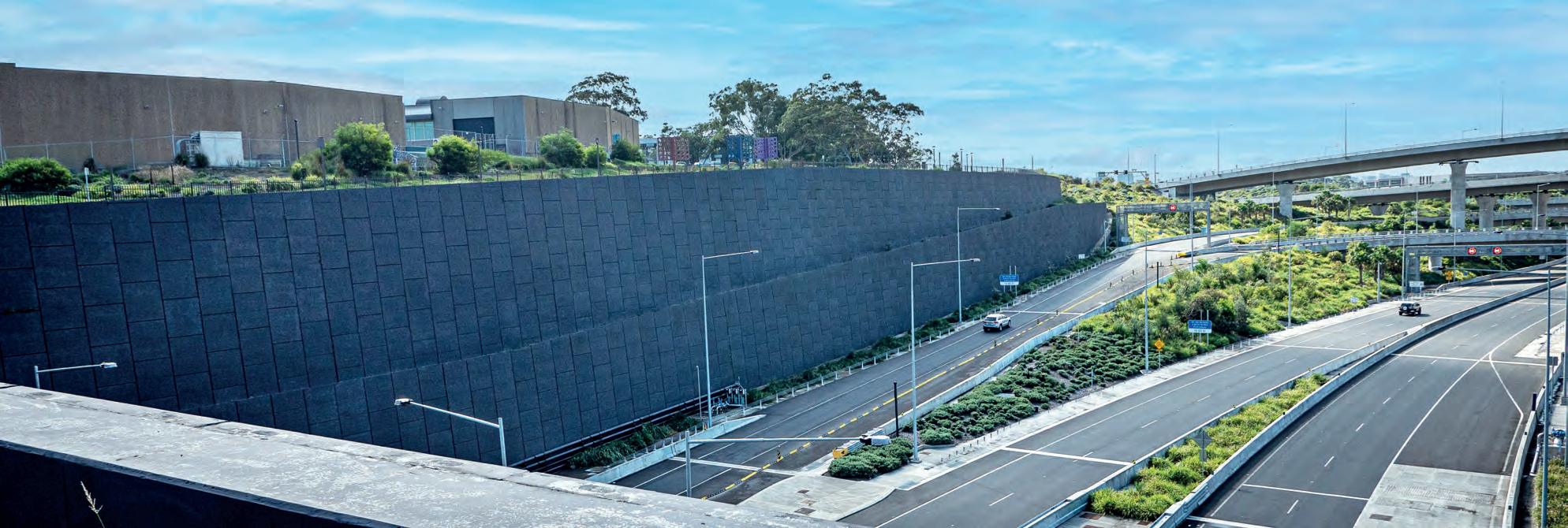
As the second major underground stage of the WestConnex motorway network, the M8 extends nine kilometres from Kingsgrove to St Peters, featuring two lanes in each direction with the potential to expand to a third lane as needed. The M8 Tunnels offer a height clearance of 5.1 metres.
The M8 has twice the capacity of the M5 East Tunnel and reduces travel time by approximately 30 minutes for motorists journeying from Sydney’s southwest to the southern CBD. It links to improved local roads at St Peters, featuring two new bridges over the Alexandra Canal, and connects to the M5 corridor. Designed with foresight, the M8 facilitates connections to upcoming projects such as the M4-M5 Link Tunnels (WestConnex Stage 3A), Sydney Gateway and the M6.
ENHANCING AESTHETICS AND SAFETY
As part of this extensive undertaking, one of National Precast’s members Ozcast was engaged to supply critical precast concrete elements, including parapets and architectural finish panels, to enhance the safety and aesthetic appeal of the motorway.
The project’s complexity was heightened by the necessity to perform installations over live roads, demanding meticulous
Images: National Precast.
Ozcast was engaged to manufacture over 2000 panels as part of its works on the St Peters Interchange.
to

planning and co-ordination to ensure minimal disruption to the ongoing traffic and adherence to stringent safety standards.
Ozcast’s scope for the WestConnex M8 project was twofold.
Firstly, the company was responsible for the rapid production and supply of 106 precast parapets, these were required due to the design specification changing from in-situ to precast. This change was necessitated by the requirement to install the parapets over live roads, thus calling for precast elements that could be quickly and safely installed, minimising the impact on road users.
Secondly, Ozcast was engaged to manufacture over 2000 panels with an architectural finish for a retaining wall that was concurrently being designed as the installation progressed.
“THE CHANGE TO PRECAST PARAPETS PROVED TO BE A PRUDENT DECISION, ALLOWING FOR EFFICIENT INSTALLATION OVER LIVE ROADS WITHOUT COMPROMISING SAFETY OR CAUSING SIGNIFICANT TRAFFIC DISRUPTIONS.”
This presented a logistical challenge to allow works to continue, requiring Ozcast to manufacture a steady supply of panels to keep pace with the highly skilled installers working on the project. The dynamic nature of the design process demanded flexibility and responsiveness from Ozcast to accommodate any design changes and ensure a consistent supply.
ADAPTING TO CHANGE
Despite the challenges, Ozcast was able to successfully meet the project’s demands,
PRECISION AND QUALITY: THE HALLMARKS OF OZCAST
As a National Precast Precaster member, Ozcast is a leading precast concrete manufacturer based in New South Wales, specialising in a wide range of structural and architectural precast elements.
Renowned for its innovative solutions and high-quality products, Ozcast supplies various sectors including infrastructure, commercial and residential projects. The company’s commitment to excellence is evident in its meticulous attention to detail, adherence to strict safety standards and ability to handle complex projects with precision.
With a focus on sustainable practices and advanced manufacturing techniques, Ozcast makes a significant contribution to Australia’s evolving construction landscape, delivering both functional and aesthetic enhancements to numerous high-profile developments.
delivering the precast parapets and panels within the tight timeframes required. The change to precast parapets proved to be a prudent decision, allowing for efficient installation over live roads without compromising safety or causing significant traffic disruptions.
The architectural finish panels were supplied in sync with the installation schedule, despite ongoing design changes, contributing to the timely completion of the retaining wall.
The outcome of Ozcast’s involvement in the WestConnex M8 project was a testament to the company’s ability to adapt to design changes and scale up production rapidly.
The precast parapets and panels not only met the functional requirements of the motorway but also enhanced its visual appeal.
Ozcast’s commitment to quality and customer service was evident in its ability to navigate the complexities of the project, ultimately contributing to the visual aesthetics of the WestConnex M8.
Ozcast had
accommodate design changes and ensure a consistent supply for its works on the St Peters Interchange in New South Wales.
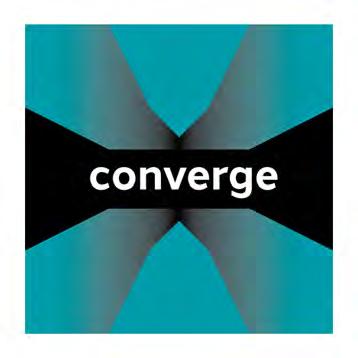
CONSTRUCTION’S ONE-STOP-SHOP CONVERGE:
WANT TO SEE WHAT THE FUTURE HAS IN STORE FOR THE INFRASTRUCTURE SECTOR? THEN WELCOME TO CONVERGE.
Converge is a brand-new expo that for the first time will bring together Municipal Works and Commercial and Civil Construction, to provide attendees a glimpse at Australia’s infrastructure future.
Set to be held in September 2025, Converge will be the one-stop-shop for SubContractors, Project Engineers, Council Fleet Managers, and Large-Scale Construction Contractors focused across the municipal works, civil construction and infrastructure space.
Attendees and exhibitors will have the chance to come together to exchange concepts and solutions to empower not only the construction sector, but also the municipal works industry to ensure that adequate infrastructure can meet demand for decades to come.
From the construction site to the boardroom, Converge will be the new home for important discussions and knowledge exchanges around the development of essential infrastructure projects, big and small.
This and much more, involving a wide intersection of stakeholders from across every step of the building process, will be showcased.
Lauren Chartres, Converge Show Director says the event will cover everything that’s required to successfully deliver infrastructure
works, including equipment, right through to planning and management software.
“Unlike other events, Converge covers the entire infrastructure sector and will showcase equipment and demonstrations right on the expo floor,” she says.
“It’s the perfect opportunity for businesses that have clients from Tier One and Two contractors right through to smaller operators and council departments to connect with those companies in one place, at one time. We know that nothing like Converge currently exists within Australia.”
Sarah Bachmann, Chief Executive Officer – National Precast Concrete Association Australia, says the event will likely present an ideal opportunity for the precast sector to connect with other areas of the market.
“At Converge, civil and infrastructure precast manufacturers can benefit from interactive networking sessions as well as attending and presenting at educational sessions on changes to sustainability requirements, the trend towards offsite construction, regulatory updates, design solutions, quality control and case studies. Topics also might include digital tools like BIM, how AI (Artificial Intelligence) can be used in the industry and insights into economic trends,” she says.
“Precast concrete manufacturers in Australia face challenges including adapting

to evolving regulations, meeting sustainability demands, managing supply chain disruptions and addressing skilled labour shortages.
“Technological integration and market competition also pose issues, along with project-specific requirements and economic fluctuations. Overcoming these concerns requires staying current with industry trends, investing in technology and developing strong stakeholder relationships.”
BUILDING AUSTRALIA’S FUTURE, TOGETHER
A major segment of Converge will be dedicated to civil construction and road maintenance. In partnership with Roads & Infrastructure and Infrastructure magazines, this area will offer Tier One through to Tier Three contractors a view of the latest equipment and technology available on the market.
The dedicated construction technology space will include a stage featuring live demonstrations of the latest software that is transforming commercial construction projects.
A conference area will welcome leaders from major civil works projects to share knowledge on Victoria’s Big Build projects as well as the 10-year, $120 billion infrastructure pipeline for the state, offering unprecedented access to decision makers.
pic: Converge will provide a sneak peek into the future of the construction sector, showing off innovative materials, machines and methods.
be
stop-shop for construction. Image: Prime Creative Media.

“We want to ensure that we’re providing the opportunity for thought leadership and provoking conversations about the future of the Australian infrastructure sector,” Chartres says.
“Converge will feature an Inside Construction summit, focused on project updates from Tier One construction companies. The summit is designed to connect C-suite leaders with other project managers and those responsible for large-
will give councils and local municipalities a chance to see what’s in store for the future.
“Our local government officials operate in a rapidly expanding field. Converge will give them access to products they may not know exist and offer solutions to the issues they face daily,” he says.
“Converge closely aligns with our core purpose, which is to provide opportunities for people working in municipal works to learn about the latest innovations in
“CONVERGE CLOSELY ALIGNS WITH OUR CORE PURPOSE, WHICH IS TO PROVIDE OPPORTUNITIES FOR PEOPLE WORKING IN MUNICIPAL WORKS TO LEARN ABOUT THE LATEST INNOVATIONS IN MUNICIPAL PRACTICES AND EXPAND THEIR PROFESSIONAL NETWORK.”
scale projects, so that we can benefit from shared learnings and experiences.”
A niche area for councils and asset managers to see the latest tools available in municipal works will also feature. From horticulture equipment through to road maintenance, and larger-scale trade equipment, the area will act as a onestop-shop for council fleet managers and sub-contractors to see the latest tools on offer, with a special focus on zero emission technology.
Peter Ali, Chief Executive Officer –Municipal Works Australia, says Converge
municipal practices and expand their professional network.
“The event’s scale looks impressive, and it will be great to see numerous people sharing a common interest in civil infrastructure all in one place.”
THE BEST EXPOSURE
Converge attendees and exhibitors can also benefit from extensive media coverage in the lead-up, during and after the event, with exposure to an accumulated audience of decision makers of more than one million people.
Both Roads & Infrastructure and Infrastructure magazines will be joined by other renowned titles including Earthmovers & Excavators, Earthmoving Equipment, Utility Magazine, Inside Construction, Council Magazine and Tradie Magazine
For those who are interested in showcasing the very best that they have to offer, exhibition space is currently available. As Chartres explains.
“We have a range of options available, from floor space through to walk-on packages. Our team can also work on bespoke offerings to ensure that your needs are being met. Our company purpose is to grow organisations and industries by delivering outstanding events. We are so excited to be supporting the broader infrastructure sector,” she says.
Whether you’re an Engineer, Asset Manager, Project or Procurement Manager, or even a Sub-Contractor, Converge is the event for you.
Converge will take place on September 17-18, 2025, at the Melbourne Convention and Exhibition Centre.
For more information on exhibiting and attending, visit convergeexpo.com. au to download the prospectus, or contact our team directly on +61 3 9690 8766 or converge@primecreative.com.au
This
Left: Converge will
the one-
THE VERY LATEST IN TRENCHLESS TECHNOLOGY
THE 2025 NO DIG DOWN UNDER CONFERENCE, THE LARGEST TECHNOLOGY EVENT IN THE SOUTHERN HEMISPHERE, WILL PROVIDE THE SECTOR WITH MODERN SOLUTIONS TO TACKLE ISSUES ASSOCIATED WITH MAJOR INFRASTRUCTURE WORKS.
No-Dig Down Under is the southern hemisphere’s only large-scale conference and exhibition dedicated to trenchless technology and it’s set to come back even bigger and better in 2025.
Trenchless technology is important for installing new services, as well as rehabilitating and maintaining existing pipelines and infrastructure, without having to dig multiple trenches, disturbing traffic, business and residential locations.
With major utilities located underground and requiring ongoing upkeep and extension, No-Dig Down Under is a crucial event for local government representatives and those involved in planning decisions for major infrastructure projects.
The No-Dig conference promises to bring attendees the very latest information about products designed to make trenchless
conference and will be led by industry leaders from Australia and overseas, providing value to anyone who encounters trenchless technologies as part of their roles.
The technical program invites speakers from around Australia and the globe to present papers covering case studies, new and emerging technologies, challenging projects and environments, industry skills and training, risk management and more.
The training courses and technical program are supported by an exhibition hall extending over 4500 square metres, featuring exhibitors from all sectors of the industry. Finally, three sponsored social functions will be held, including the prestigious Australasian Society for Trenchless Technology (ASTT) Gala Dinner and Awards Evening, providing attendees with networking opportunities in a variety of settings with industry professionals.
is now considered a ‘must-attend’ for all industry professionals.
The ASTT is the peak body for trenchless technology in Australasia, providing advocacy, leadership, support and educational opportunities for organisations and individuals involved in trenchless technology.
For 30 years, the ASTT has provided members with access to the latest technological advancements, technical information, and educational opportunities through Trenchless Australasia magazine, the No-Dig Down Under conference, as well as providing access to industry tools, technical forums and webinars.
Gold sponsors have already been announced, with Pipe Core, Rob Carr and Vermeer Australia leading the way.
Now you have the opportunity to sponsor or exhibit at the event, which is set to be the
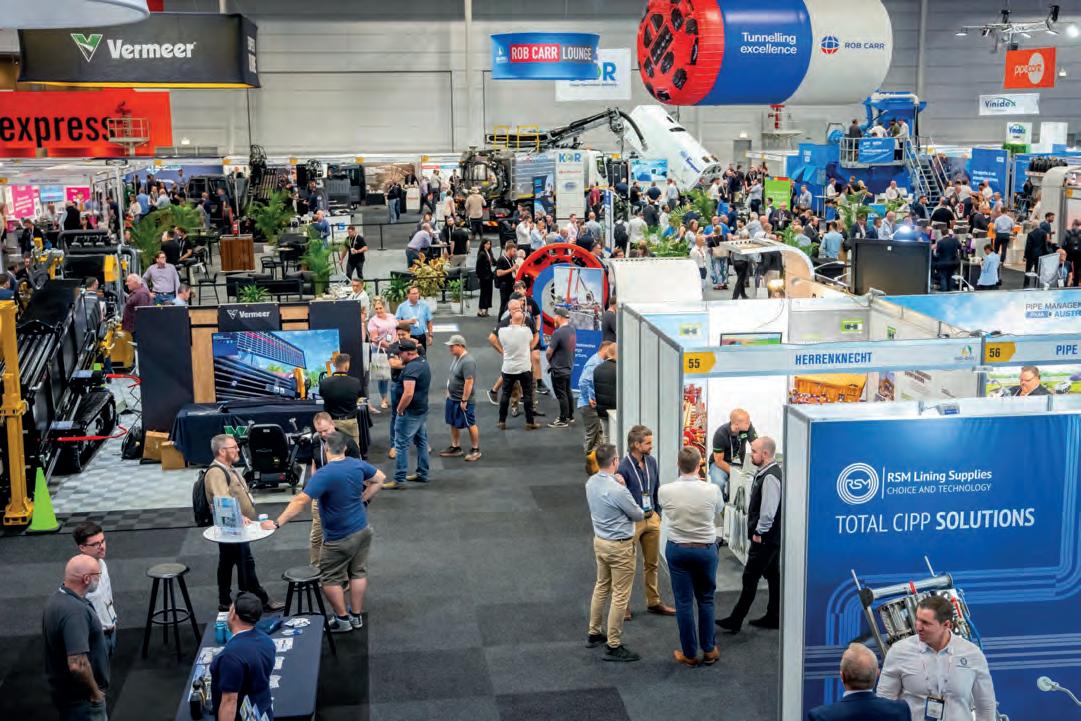

The No Dig Down Under Conference will return in 2025.
The WA Mining Conference and Exhibition will commence on October 9, 2024 at the Perth Convention and Exhibition Centre.

THE GATEWAY TO OPPORTUNITY WA MINING:
THE 2024 WA MINING CONFERENCE AND EXHIBITION WILL PROVIDE A PLATFORM FOR THE INFRASTRUCTURE INDUSTRY TO CONNECT, NETWORK, AND LEARN.
According to Western Australia’s Department of Jobs, Tourism, Science and Innovation, the mining industry represents about 45 per cent of Western Australia’s gross state product (GSP). Western Australia’s (WA) mining industry achieved another record level of employment with an average of 130,165 full-time-equivalents (FTEs) in 2023, reflecting strong levels of mining and construction activity in the state.
The 2024 WA Mining Conference and Exhibition is a prime opportunity to present technical, technological, and digital advancements throughout the entire mining value chain. It vividly demonstrates Western Australia’s economic significance, its ability to innovate, create jobs, and attract capital.
It allows METS suppliers and other infrastructure providers to engage with a high-quality audience of mining industry professionals. This event will provide the ultimate platform to showcase the latest range of products or services, access new sectors or regions and place attendees in front of Western Australia’s mining industry.
This event is impossible to miss, given its essential role in the Western Australian
and Australian economies. Rio Tinto will be represented as the keynote speaker for the 2024 WA Mining Conference and Exhibition. Other key players in the industry will be in attendance, with previous key decision-makers from Alcoa, BHP, Fortescue, South32 and Roy Hill representing just a few of the potential attendees.
WA Mining will feature a highly targeted, paid-to-attend conference covering key themes such as critical minerals, industry outlook, and digital and autonomous systems. Hear from mining decisionmakers, technology experts, and industry leaders sharing their perspectives on the future opportunities that will drive growth and sustainability for the sector.
Engage with a high-quality audience of mining industry professionals looking to evolve, adapt and improve their mining operations. Developed purely for the Western Australian market, WA Mining provides you with the opportunity to grow your business in this expanding region.
It will provide Engineers, Mine Managers, Site Superintendents, HSE Managers, Exploration Managers, and Operations
Managers with the technological insights that will shape the future of the mining industry.
Digital experts know that digitalisation and automation are pushing the industry into new frontiers. The WA Mining Conference will examine these new technologies and applications and draw insights from digital experts across a variety of sectors that could have applications in mining. Cyber security managers, technology heads, and chief technology officers will be in attendance as they look to discover the technological step-change.
With sustainability and innovation remaining at the forefront of the community’s relationship with the sector, industry and stakeholder engagement are paramount to the mining industry’s success. WA Mining Conference will look at the social license to operate and the most effective way to limit the environmental impact of mining in Western Australia. Environmental Managers, as well as stakeholder and Community Engagement Managers, will hear from industry and government experts.
Limited exhibition spots remain. To find out more, visit: waminingexpo.com.au
CONTRACTS IN BRIEF
ROADS & INFRASTRUCTURE PROVIDES
AN UPDATE ON SOME OF THE CONTRACTS AND TENDERS RECENTLY AWARDED OR PUT TO MARKET ACROSS THE AUSTRALIAN INFRASTRUCTURE SECTOR.
WESTERN AUSTRALIA
10 year, $1.6B contract awarded for Perth HCS project
A 10 year, $1.6 billion contract has been awarded to design, supply and build Perth’s High Capacity Signalling (HCS) project, which includes upgrades across the entire 500 kilometre Transperth train network in Western Australia. Alstom has been awarded works to replace and significantly upgrade the signalling and train control systems on Perth’s rail network, allowing more trains to run more often and ultimately increasing capacity by 40 per cent. 250 kilometres of electrical conduit will also be installed. This project will include the installation of more than 7000 transponders enabling precise train tracking, introducing new in-cab signalling equipment for 125 trains, and improving passenger information on more than 600 displays on 89 stations across the network. The HCS control technology will be housed at the new Public Transport Operations Control Centre (PTOCC) in East Perth, which will be a central point to ensure smooth and safe public transport operations, including incident management. The HCS project is funded by both the Federal and Western Australian governments and will be delivered in stages over the next decade to minimise disruption to train operations.
SOUTH AUSTRALIA
Contracts awarded for Tram Grade
Separation Projects
A construction alliance has been awarded works to deliver the Tram Grade Separation Projects, which will improve amenity, connectivity and liveability along the existing tram line from Adelaide’s CBD to Glenelg, in South Australia. The successful Tram Grade Separation Projects Alliance comprises constructors McConnell Dowell and CPB Contractors and designers Mott MacDonald, Arup and Aurecon. The Federal and South Australian governments have jointly (50:50) funded $400 million to remove the two level crossings where the Glenelg tram line crosses Marion Road and Cross Road, Plympton. The Alliance will remove the level crossing at Morphett Road, Morphettville, which was recently confirmed and forms part of the $850 million Broader Network Upgrade package of works, as part of the North-South Corridor T2D Project. The existing tram overpass at South Road, Glandore will also be re-built at the same time by the Alliance, funded as part of the $15.4 billion North-South Corridor T2D Project. Approximately 50,000 vehicles pass through the Marion Road and Cross Road level crossings each day. During the morning and afternoon
peak around 30 trams also pass through, resulting in the boom gates being down for up to 20 minutes each hour. Motorists currently experience congestion and variable travel times, particularly during these busy peak periods. Approximately 25,600 vehicles pass through the Morphett Road Level Crossing each day. As part of the project, the intersections at Marion Road and Cross Road and Marion Road and Anzac Highway will be upgraded to further relieve congestion and improve safety. Site investigations to inform planning are underway. Major construction will start in late 2024 and the level crossings will be removed by the end of 2025.
NEW SOUTH WALES
Successful contractor confirmed for new Spring Creek Bridge
Works on the new Spring Creek Bridge on the Kamilaroi Highway will get underway in September, following the awarding of the construction contract to build the 64-metrelong bridge in New South Wales. Saunders Civilbuild has been confirmed as the successful contractor for works on the major crossing over Spring Creek, on the Kamilaroi Highway near Narrabri. The project will improve road safety, particularly for heavy vehicles that rely on the bridge to travel between Narrabri and Wee Waa in North-Western New South Wales. The new bridge will be built on the same alignment as the existing culvert, with two-way traffic flow on the Kamilaroi Highway maintained via a temporary sealed side track throughout the construction phase. Works on the temporary sealed side track started in August 2023 and have wrapped up. The new Spring Creek Bridge is expected to open to traffic in 2025. The $13.1 million upgrade is being jointly funded by the Federal ($5 million) and New South Wales ($8.1 million) governments.
NORTHERN TERRITORY
$44M contract awarded for Plenty Highway works
The Northern Territory Government has awarded $44 million of works to upgrade and seal a 27-kilometre section of the Plenty Highway in Central Australia. Aldebaran Contracting has been announced as the preferred proponent for the works. The Plenty Highway is one of the seven interconnecting roads that make up The Outback Way, a key tourism route also known as Australia’s longest shortcut that cuts through the middle of Australia, from Queensland through to Alice Springs in the Northern Territory before
finishing in Western Australia. The project upgrades are designed to improve safety and will also provide greater access and benefits to remote communities as well as the tourism, mining and freight sectors. Works will begin in late 2024 and are expected to be completed by December 2025.
VICTORIA
Preferred bidder announced for SRL East tunnelling works
The second tunnelling contract for the Suburban Rail Loop East project has hit a major milestone, with a global consortium of tunnelling specialists being announced as the preferred bidder, as works power ahead on the first stage of the Victorian-based project. The Suburban Rail Loop will transform Victoria – and by 2026, tunnel boring machines will be in the ground and more than 4000 people will be directly working on the project. SRL East will deliver six new underground stations at Cheltenham, Clayton, Monash, Glen Waverley, Burwood and Box Hill. The successful consortium consists of WeBuild S.p.A, GS Engineering and Construction Australia, and Bouygues Construction Australia – Terra Verde. They will deliver the 10-kilometre northern twin tunnels between Glen Waverley and Box Hill following contract negotiations as part of the second tunnelling package. The $3.6 billion contract for the first stage of tunnelling was awarded to Suburban Connect in December 2023 to complete the 16-kilometre southern twin tunnel between Cheltenham and Glen Waverley. Site investigations and preparatory work are currently making way for tunnel boring machines (TBMs) to begin work in 2026. The package to build the high-tech fleet of SRL trains, fit out the tunnels, install signalling and operate and maintain the network will be awarded next year – with the two contracts to build the six new underground stations to follow. The Tunnels North contract will be awarded later in 2024. This stage comprises all tunnelling and station box excavation works on the SRL alignment between Glen Waverley and Box Hill. Two contracts to build the six new underground stations will be awarded from 2026. The project is backed by an $11.8 billion investment by the Victorian Government and a $2.2 billion investment from the Federal Government.

Small Asphalt Rollers Compact
and Smart

Dynapac’s sixth generation CC1300VI and CC1400VI small asphalt rollers are designed and built to meet the construction industries ever evolving and tough conditions. The new design has resulted in a robust, comfortable and modern machine that still achieves the market leading compaction results that Dynapac is renowned for.
The new generation has a unique cross mounted engine providing exceptional access to engine and hydraulic components. This new engine concept and the slideable operators seat combine to increase visibility to drum edges and the greater worksite. High vibration frequency, offsetability of the drum, high efficiency eccentrics and options such as edge press devices and chip spreaders all improve compaction efficiency and versatility.










INNOVATING FOR TODAY, PROTECTING TOMORROW.
From our pioneering technologies to our people-centric approach, SAMI Bitumen Technologies is dedicated to shaping a sustainable future. Our latest investments and visionary outlook reflect our unwavering commitment to Australia’s roads and the environment.


